Guadua angustifolia
Guadua angustifolia ‘Kunth’ is a tropical species of giant timber bamboo native to South America. It is considered to be the strongest bamboo in the world, and also the 3rd largest. Guadua bamboo is by far the most important bamboo in America, and is often compared with its Asian counterpart: Moso (Phyllostachys edulis).
In 1822, the German botanist Kunth described Guadua as a genus segregated from the Asian one, Bambusa. Kunth used the indigenous word ‘angustifolia’ (narrow leaf), which was the name given to this bamboo among the native communities of Colombia and Ecuador.
Guadua angustifolia produces exceptional quality timber and belongs to the list of priority species. Common names for this species are Colombian Timber Bamboo, Colombian Giant Thorny, or American Narrow-Leaved Bamboo.
| Plant Info | |
|---|---|
| Scientific Name | Guadua angustifolia |
| Synonyms | Bambusa guadua |
| Common Names | Guadua, Colombian Timber Bamboo, Colombian Giant Thorny |
| Family | Poaceae |
| Tribe | Bambuseae |
| Genus | Guadua |
| Height | 15 - 30 m |
| Diameter | 7 - 18 cm |
| Growth Habit | Open Clumping |
| Climate | Tropical - Subtropical |
| Hardiness | -2°C |
| Edibility | (0 of 5) |
| Flowering Cycle | 32 years |
| Origin | Colombia, Ecuador, Venezuela |
| Uses | Construction, Laminated Lumber, Crafts, Animal Food, Fuelwood, Musical Instruments, Medicines, Basketry, Erosion Control, Ornamental, Landscaping |
Rhizomes
Although technically a clumping bamboo, Guadua angustifolia is often seen as a spreading bamboo since its rhizomes can reach lengths between 1 and 2,5 m.
In Colombia the guadua rhizome is commonly referred to as “Caiman” because of its resemblance to the body of a crocodile. Each rhizome has a distinguishable front and rear part also known as the “Caiman’s body” and “Caiman’s tail”.
The rear part consists of a solid cylindrical axis with an average diameter of 6,5 cm and an average length of 80 cm. The thickened and widened front part is on average 20 cm wide (the widest part), 11,5 cm thick and about 50 cm long.
It is the front part of the rhizome that generates new rhizomes. Such new rhizomes either become strong rhizomatic branches of about 60 cm long that anchor and support the aerial part of the plant, or become rhizomes that can produce new shoots/culms.
Each Guadua rhizome can produce up to 4 new culms within its reproductive period of 4 years. Shoots usually occur during rainy season, where a maximum of 3 shoots per rhizome can emerge simultaneously. All new culms emerged from a single rhizome system will have similar or greater diameter and length characteristics than the plant it was generated from.
Roots
Guadua angustifolia roots emerge from the rhizomes and have an average diameter of 5 mm. Each rhizome produces around 600 to 1000 roots.
Approximately 40% of the total roots emerge from the underside of the rhizome and grow vertically reaching depths of up to 2,5 m (depending on the soil texture). The remaining 60% of the roots sprout from the lateral parts of the rhizome and present a horizontal growth that can reach distances up to 5 m.
Although Guadua roots can grow quite deep, they do not necessarily need deep soils to develop. Guadua angustifolia can grow perfectly in soils that are only 40 or 45 cm deep.
Culms
The culms of Guadua angustifolia are on average 15-25 m tall and 9-13 cm in diameter. However, diameters up to 25 cm and heights up to 35 m have been reported, which makes Guadua angustifolia the 3rd largest bamboo species in the world. Normally it takes between 6-8 years after planting to produce average size culms, but under perfect conditions, 12 cm diameter culms could already start to appear in the 4th year.
A very prominent characteristic of all species within the Guadua genus are the thick white bands around the nodes. With Guadua angustifolia, each node has an upper and lower whitish to brown colored band that consist of short stiff hairs. These bands gradually lose their color as the culm matures. Fully matured culms are recognized by the absence of these white nodal bands.
Young Guadua angustifolia culms have an intense green color due to the high content of chlorophyll in its tissues. Chlorophyll is a green pigment essential for photosynthesis. Until branches and leaves have been developed, the culm is responsible for turning light into energy. In later stages of its development the culm color changes to a dark green and eventually pale green color.
Guadua angustifolia internodes are hollow with an average wall thickness of 1,3 cm, and present a shallow groove close to the buds at the nodes. A 20 m tall culm counts a total of 75 internodes which can be divided into 4 parts;
The first section, starting from the base has a total length of 4 m and consists of 18 internodes with an average length of 22 cm. This part of the culm remains covered with culm sheaths until it has matured. Long thorny basal branches may develop.
The second section has a total length of 6 m and consists of 18 internodes with an average length of 34 cm. In this part of the culm, the internode lengths are constant and do not develop branches. Culm sheaths fall of early.
The third section has a total length of 7 m and consists of 18 internodes with an average length of 37 cm. The longest internodes are found in this part of the culm, it is also the section where the first (and longest) apical branches start to appear.
The fourth section has a total length of 3 m and consists of 21 internodes with an average length of 14 cm. In this section of the culm, diameter and length of the internodes decreases rapidly. As in the third section, culm sheaths fall off when branches start to appear. Due to the weight of branches and leaves, the tip of the culm arches.
Branches
Guadua angustifolia has two types of branches which are each performing specific functions; the basal branches and the apical branches.
Basal branches are located in the first quarter of the culm (from node 3 to 18). Usually a total of 4 to 12 branches emerge from this part of the culm and consist of 1 single thorny branch on every other node. These branches grow at opposite sides of the culm and in a straight line.
The average length of basal branches is 3,8 m but can extend up to 6-8 m. They have an average diameter of 1,1 cm and bare 3 spines per node, of which the central spine is longer than the lateral ones. Often times these branches stop growing after 2 to 10 cm, becoming dangerously sharp protective thorns.
Apical branches start to develop from the middle part of the culm, approximately at node 38. Usually a total of 36 branches develop at this part of the culm and consist of 1 single branch on every other node, gradually shortening their length towards the apex forming a “fish bone”. Apical branches don’t have thorns but bear abundant foliage. Their average diameter is 2 cm.
Leaves
Guadua angustifolia leaves are lance-shaped and on average 13-21 cm long by 14-32 mm wide. They are smooth on the upper surface and present whitish hairs on the underside.
In an adult culm there are between 14.000 and 20.000 leaves that generate a foliar area of approximately 53,5 m².
Habitat
Guadua angustifolia can grow in all tropical life zones, but reaches its best development in very humid lower montane, and very humid subtropical forests. Large native forest can be seen in the central coffee region of the Andes in Colombia.
Optimal climate conditions for spectacular growth are average temperatures between 20 and 26 °C, altitudes between 900 and 1600 meters above sea level, annual rainfall between 2000 and 2500 mm, and a relative humidity of 75 - 85%.
In terms of soil requirements, Guadua angustifolia prefers alluvial soils that are rich in volcanic ash with a moderate fertility and good drainage.
Five centuries ago there were about 12 million hectares of natural forests in Colombia. Today it is estimated that there are about 51.000 ha of Guadua left, 46.000 ha of natural forests and some 5.000 ha of planted forests.
Uses
Guadua angustifolia, often referred to as "vegetal steel", is most famous for its extraordinary strength properties that surpass many conventional timber species. The favorable mechanical properties of the stems, combined with high durability, flexibility, relative light weight, regular form, and resistance, have made it one of the world's most important bamboo species for construction related applications.
Architects and engineers use Guadua in all types of buildings such as prefabricated structures, social housing projects, urban construction, and sturdy bridges. Houses built with Guadua bamboo are also earthquake resistant and can easily meet the International Building Code (IBC).
In agricultural and livestock sectors, Guadua is widely used for building rural bridges, fence posts, rural water supply systems, sheds, poultry and cattle pens, erosion barriers, greenhouses, and as plant support sticks for various crops. The use of bamboo as plant stakes has largely replaced the use of other forest species that were in the process of deterioration.
In local economies bamboo is also a very popular raw material for making furniture and crafts. From bamboo musical instruments to countless household items like cups, bowls, flower vases, etc. In Colombia the Guadua stems and even rhizomes are used for making luxury design furniture and lamps. The strength of the Guadua poles also allow for building playground equipment such as swing sets, sandboxes or slides.
As a natural fiber Guadua has enormous potential for the manufacturing of floor boards, panels, plywood, veneer, moldings, laminated furniture, utensils, etc. In other words, high quality products that could be sold to national and international markets.


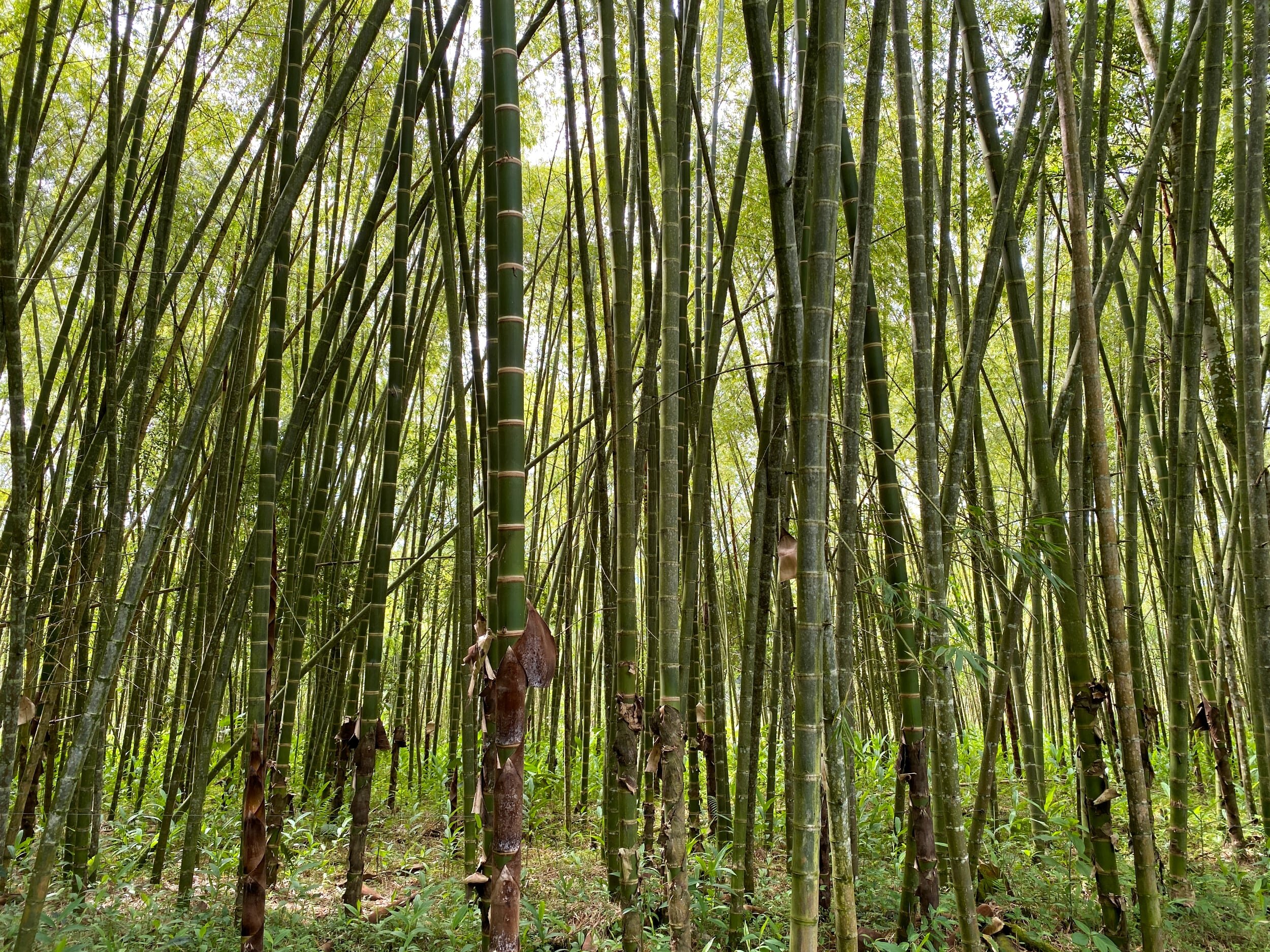
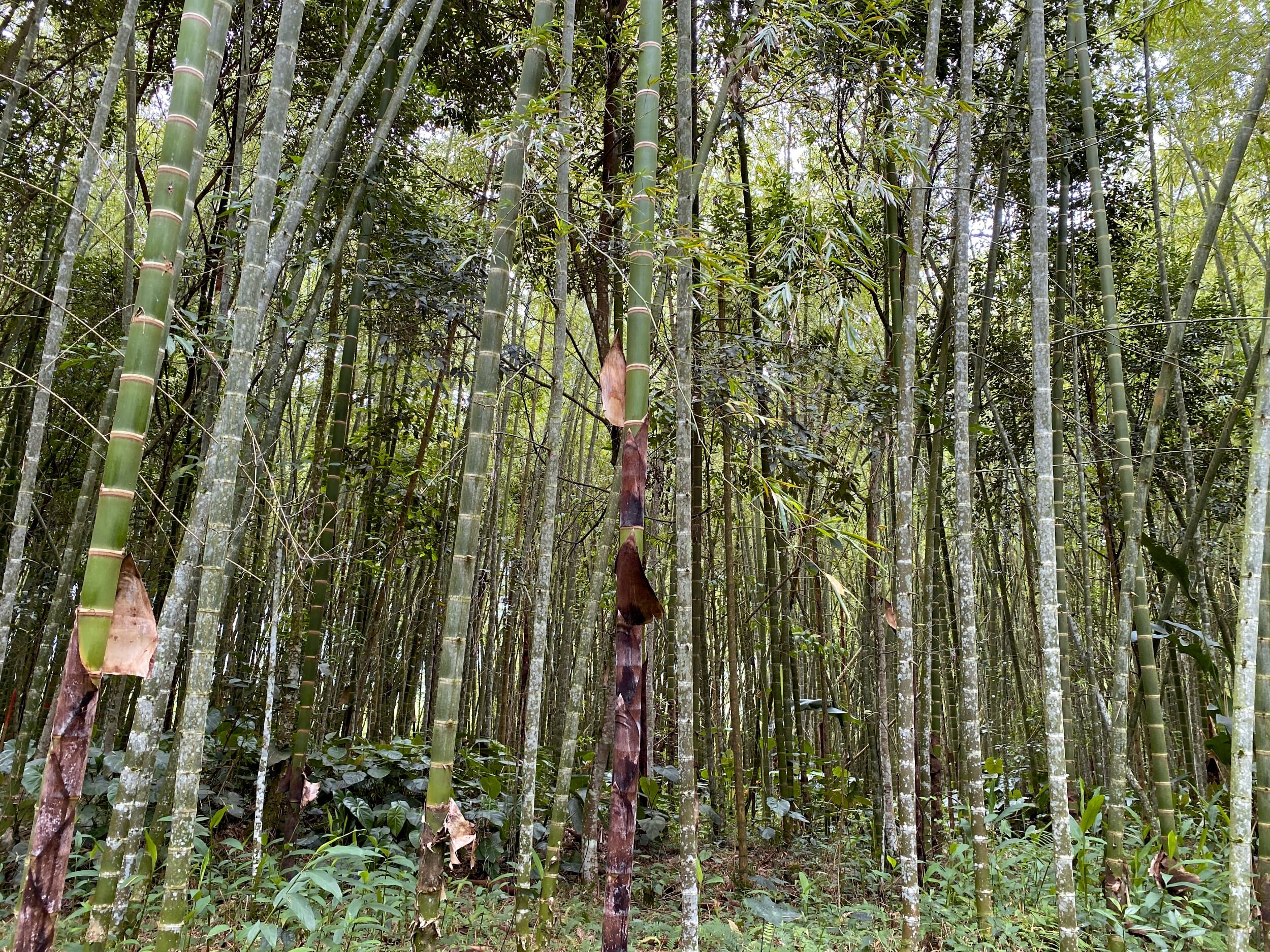
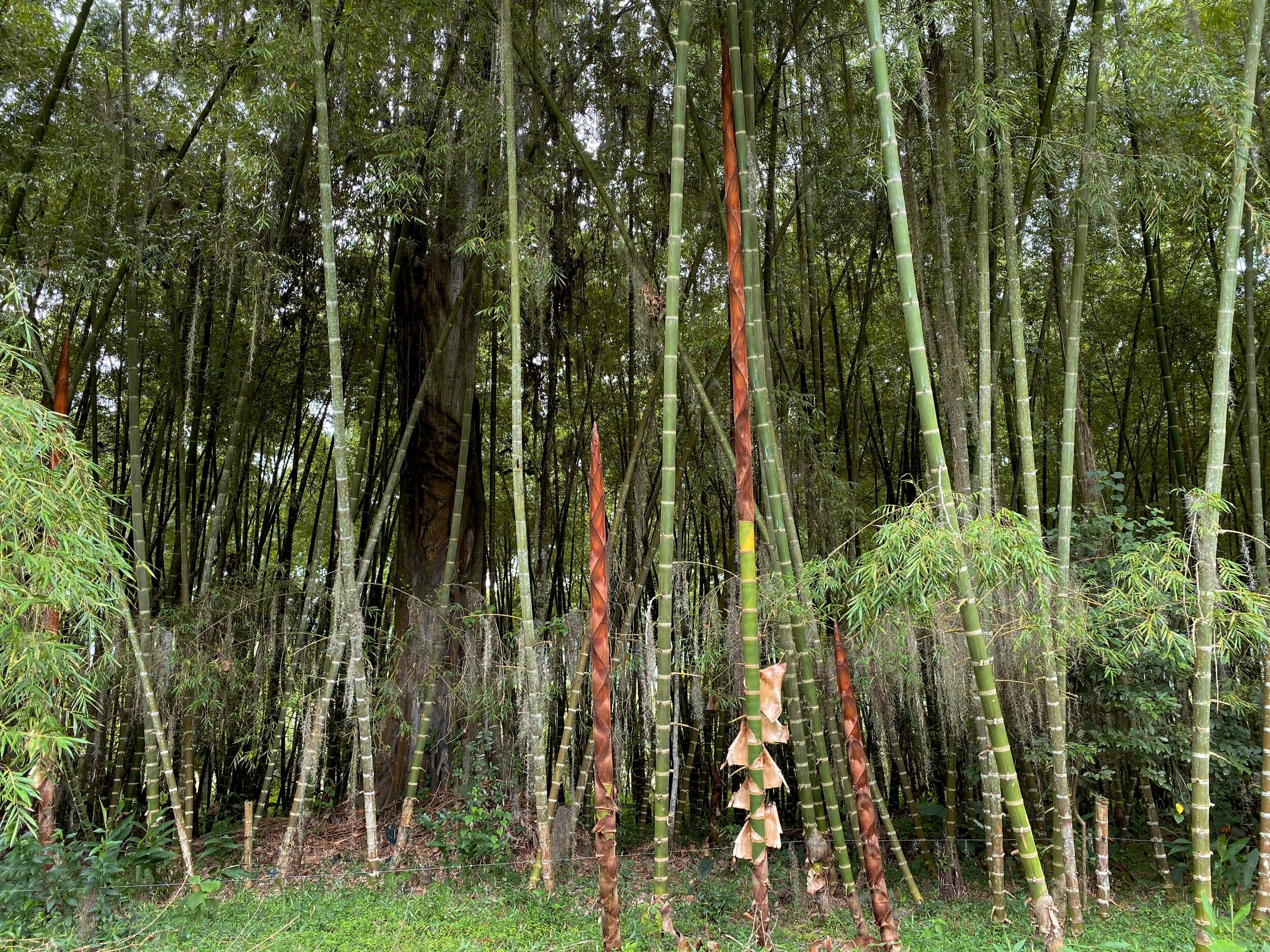
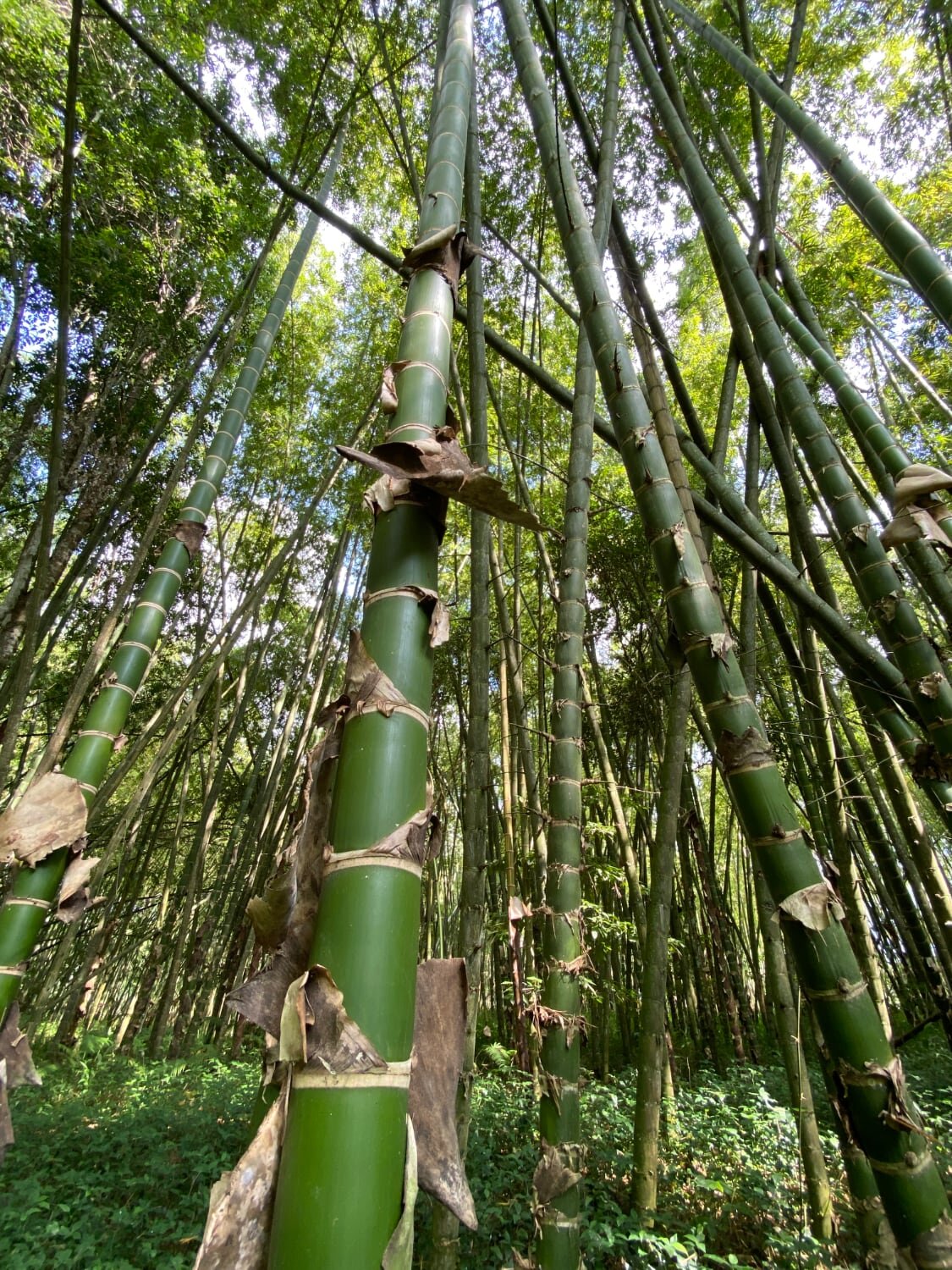
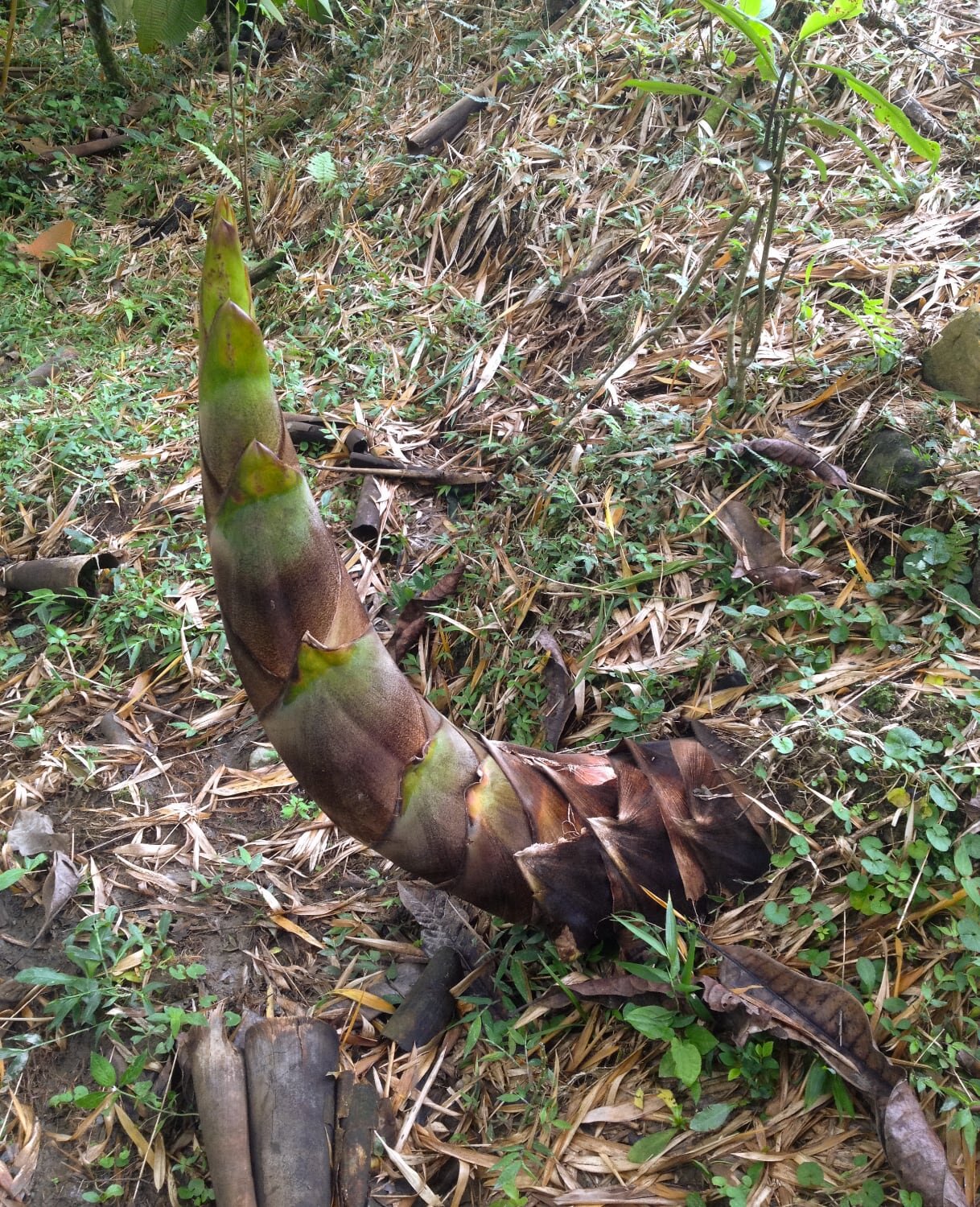
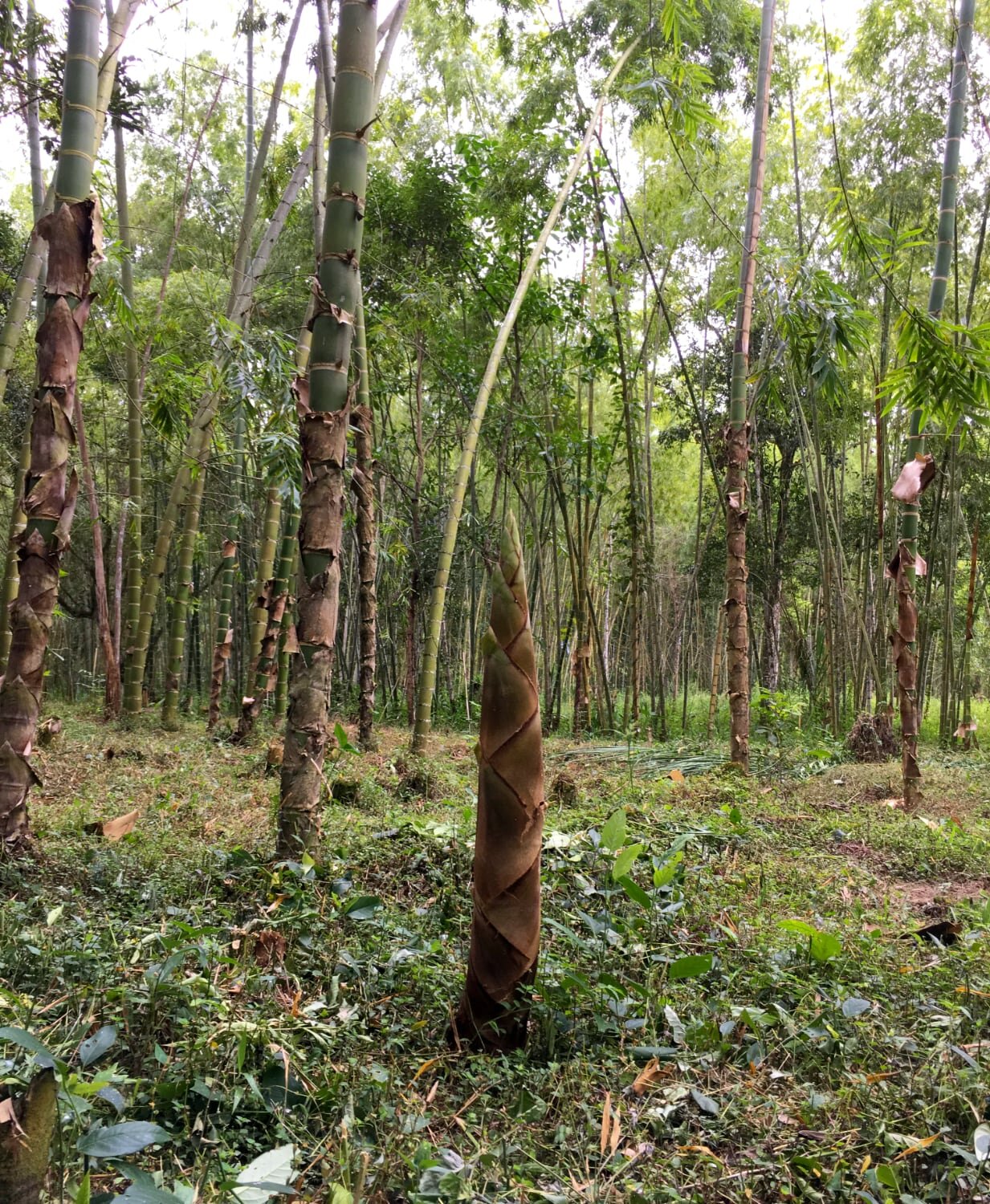
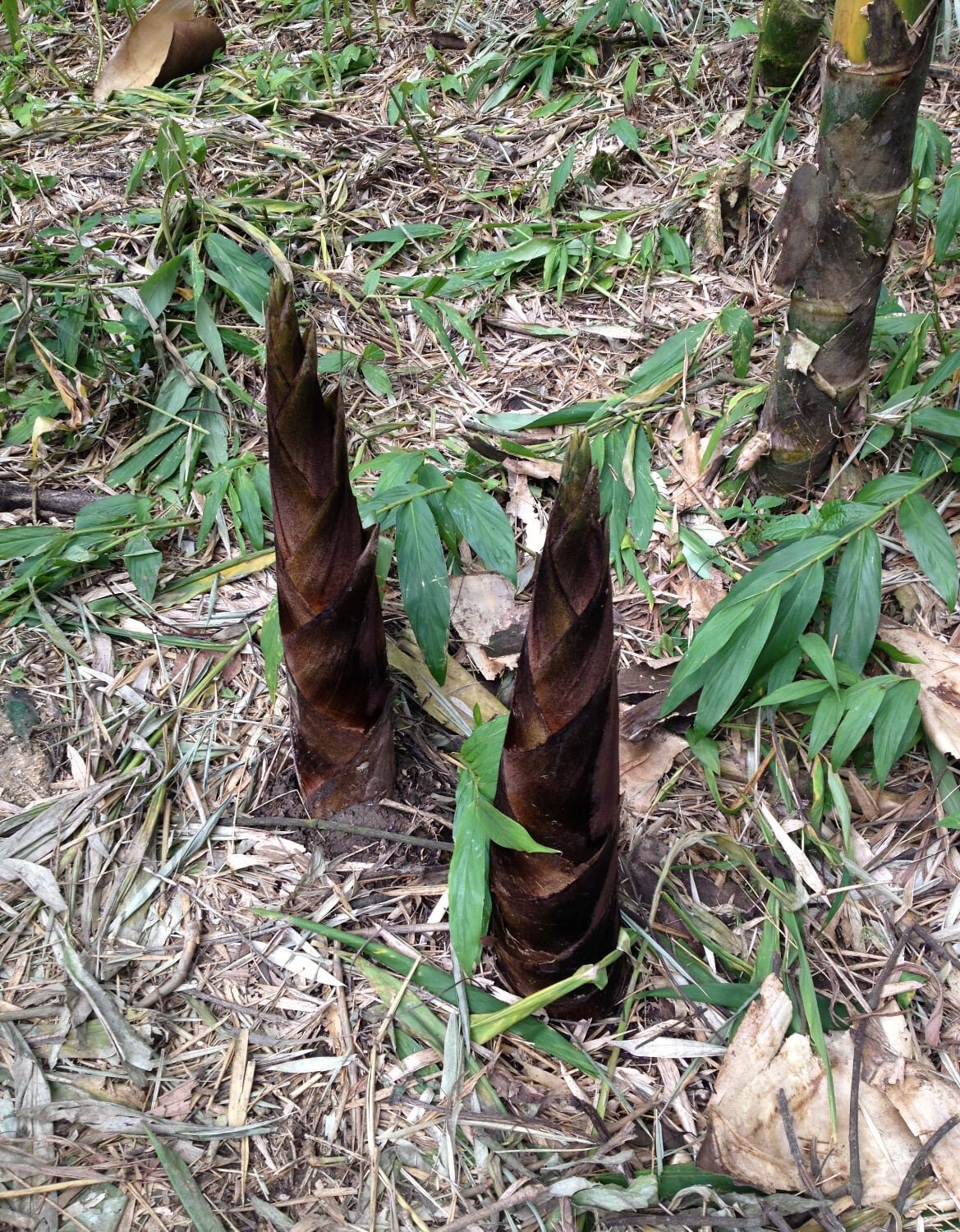

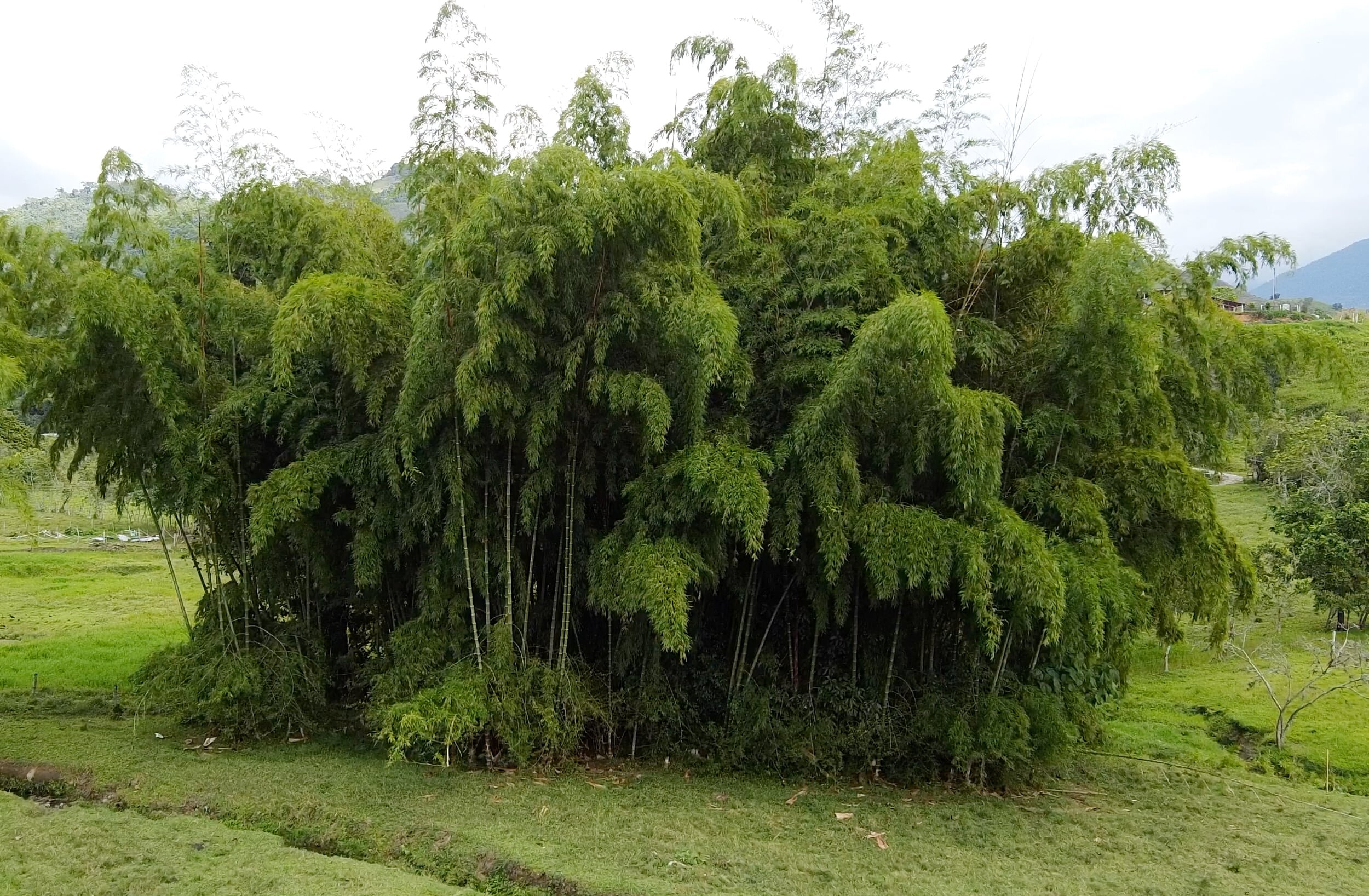
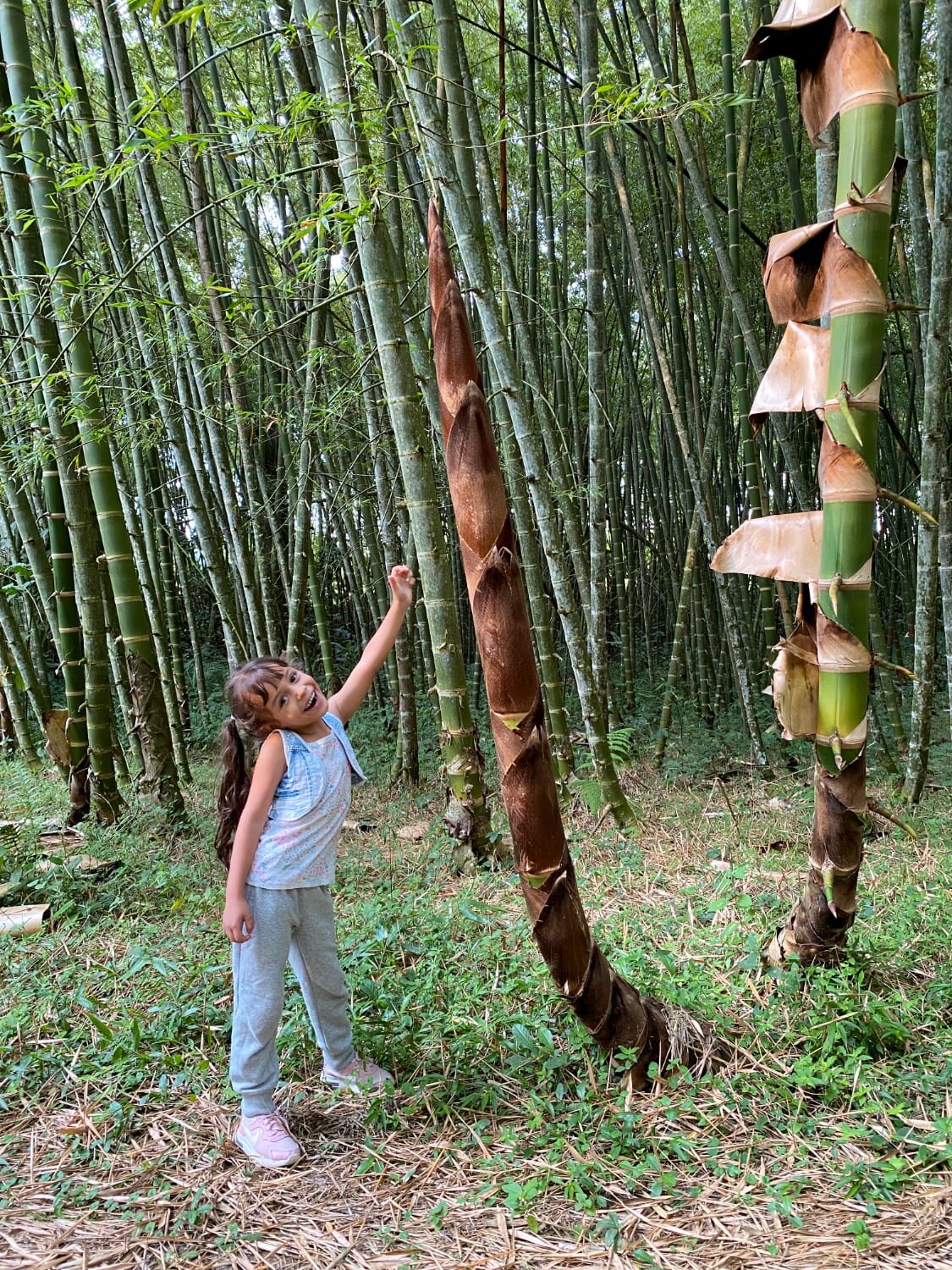


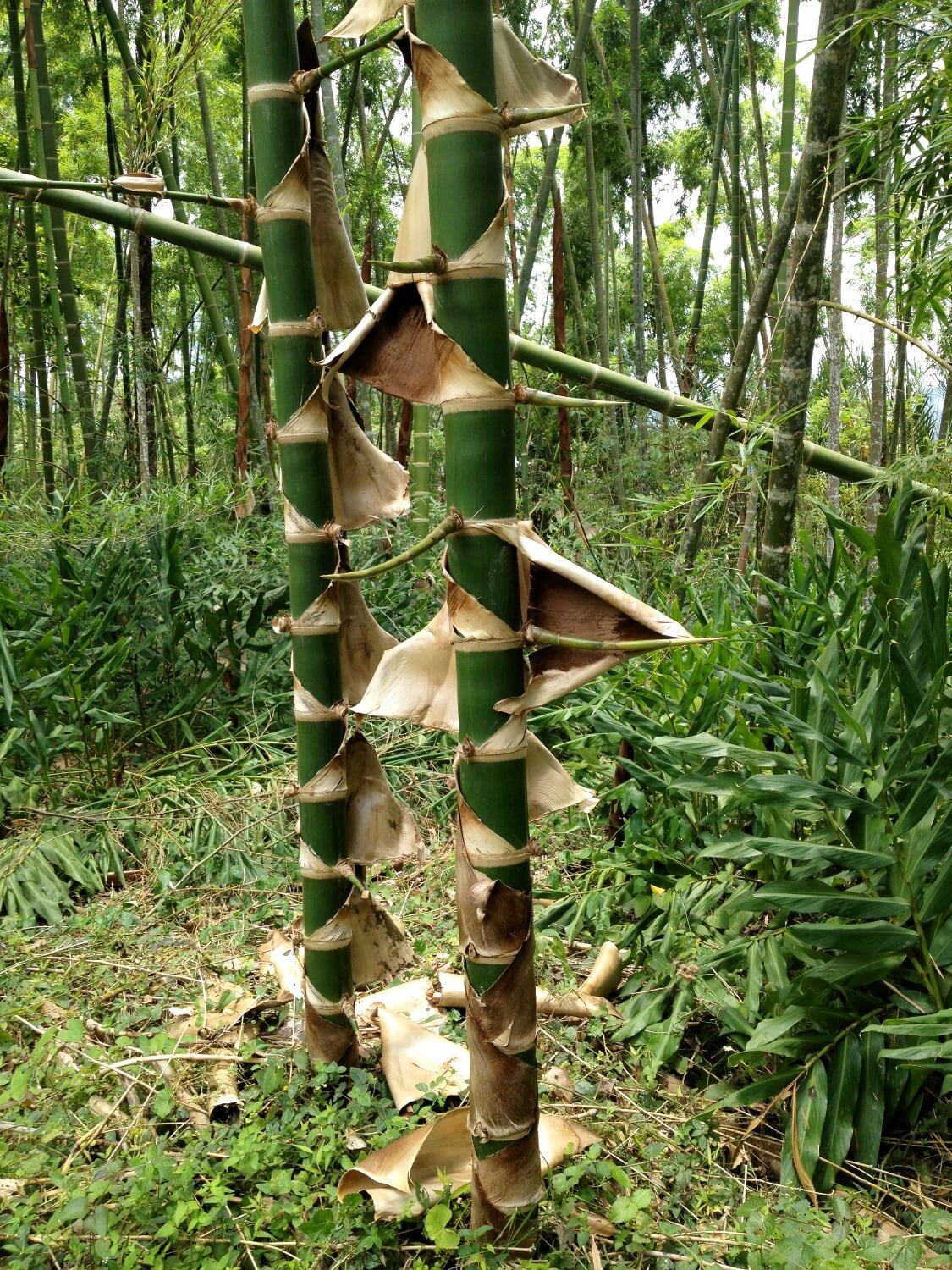
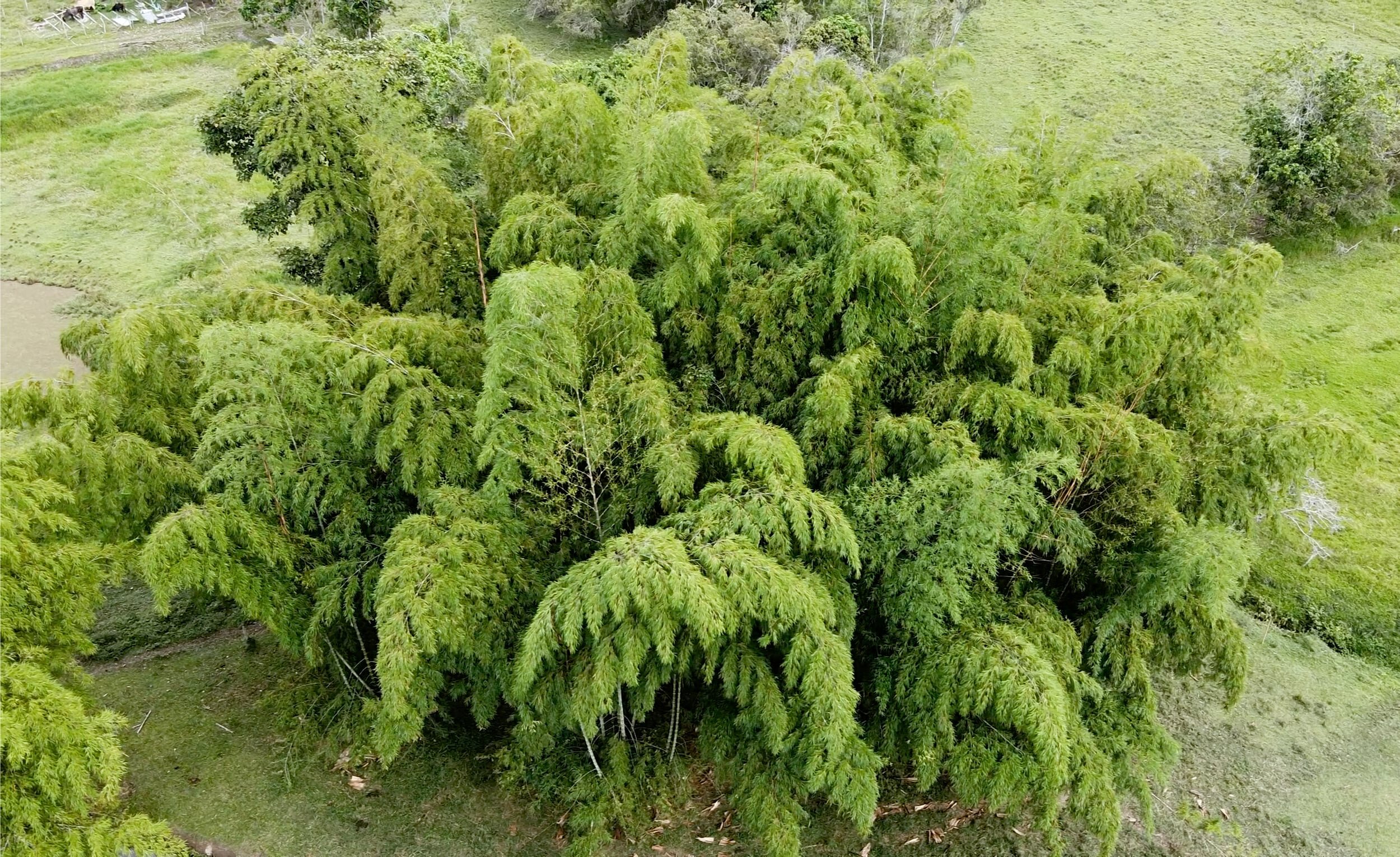







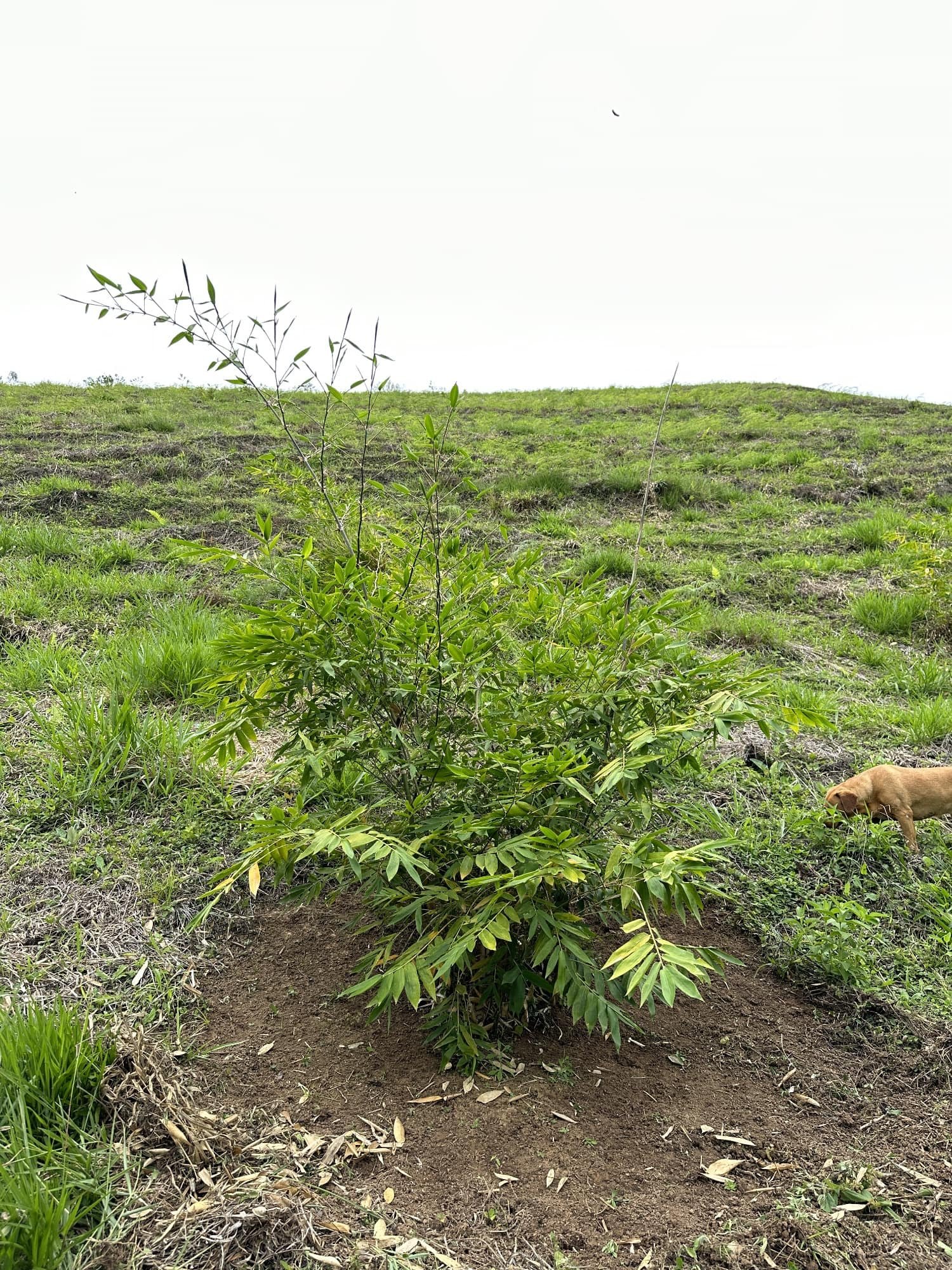
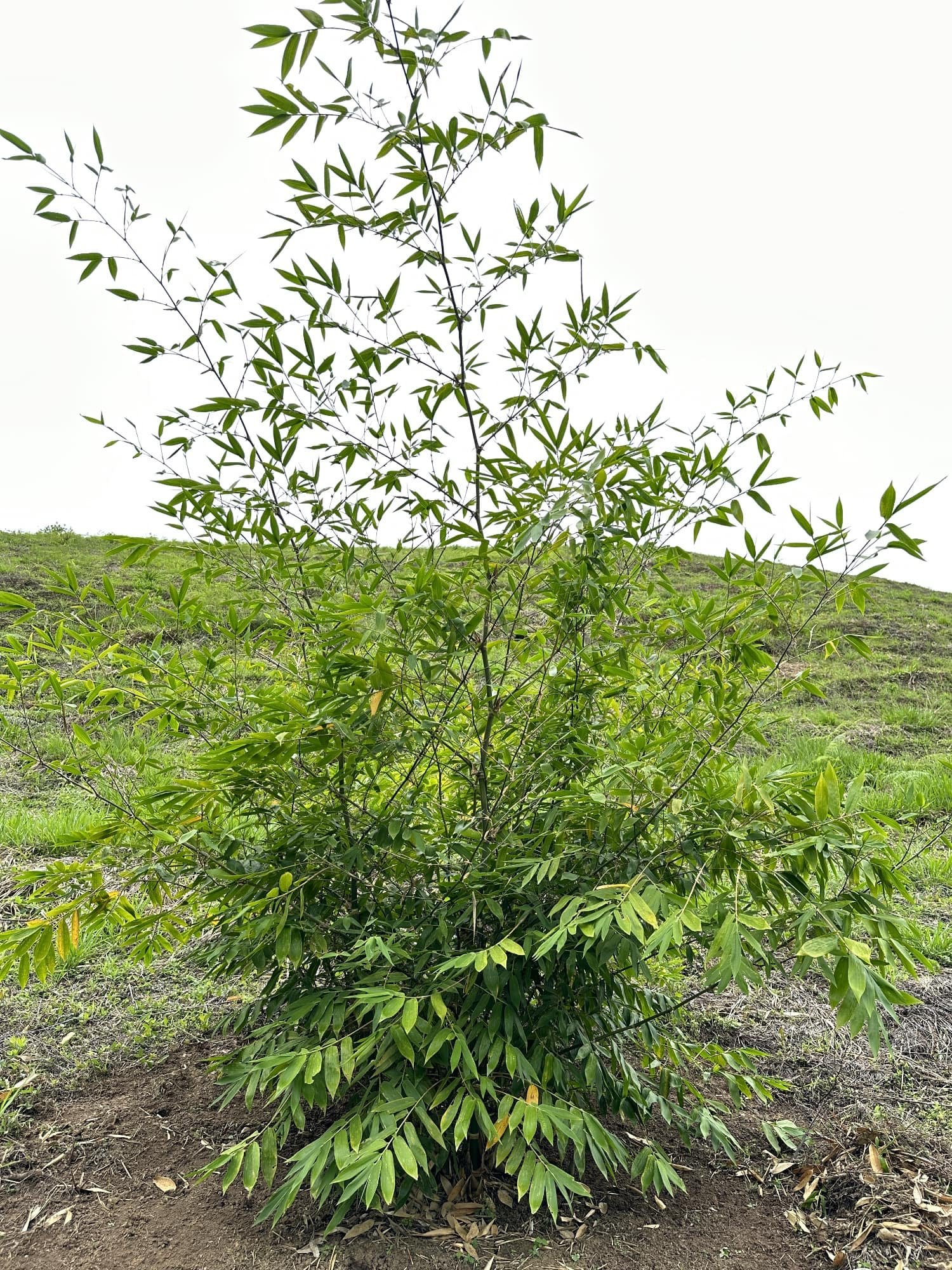
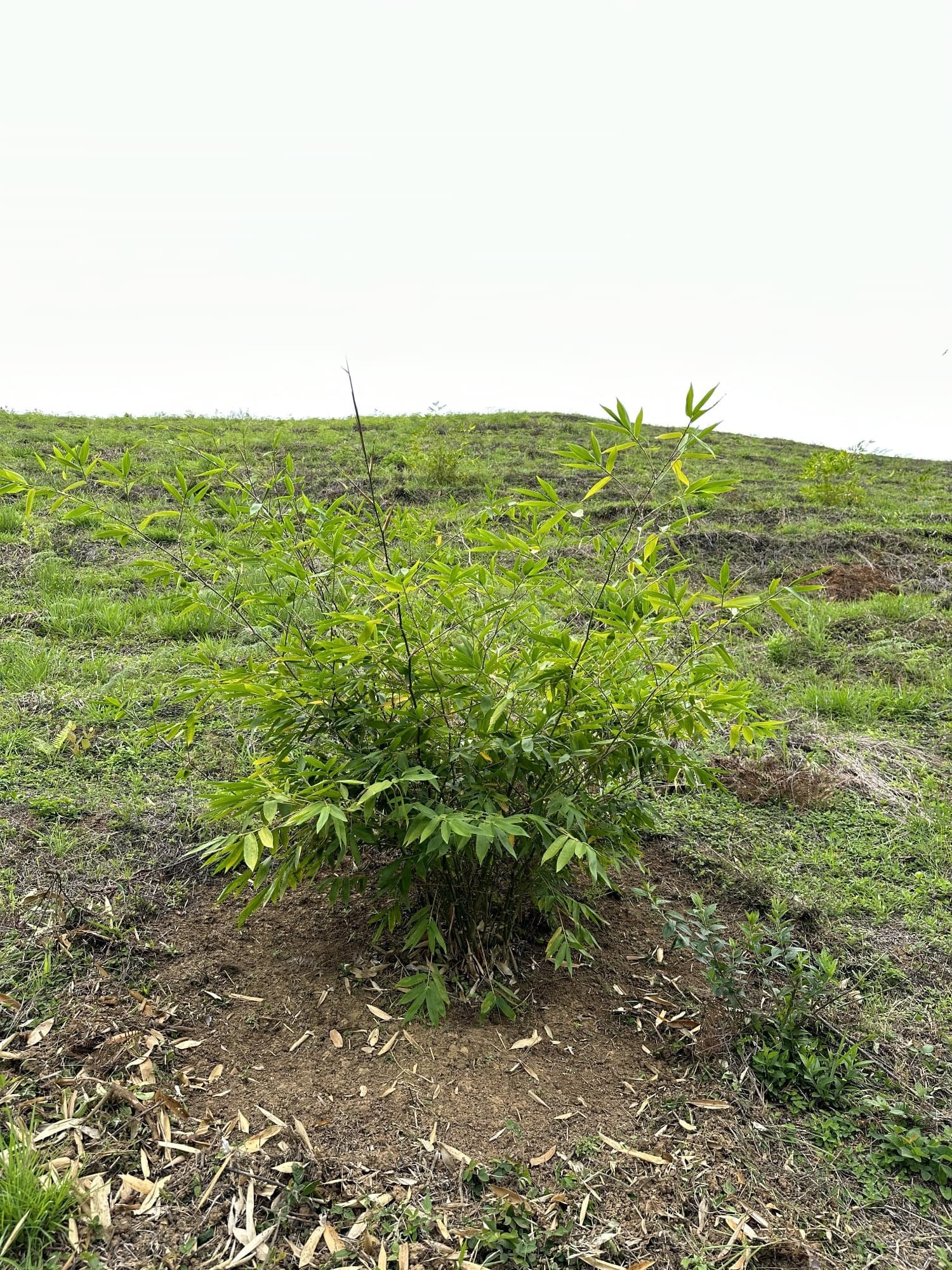





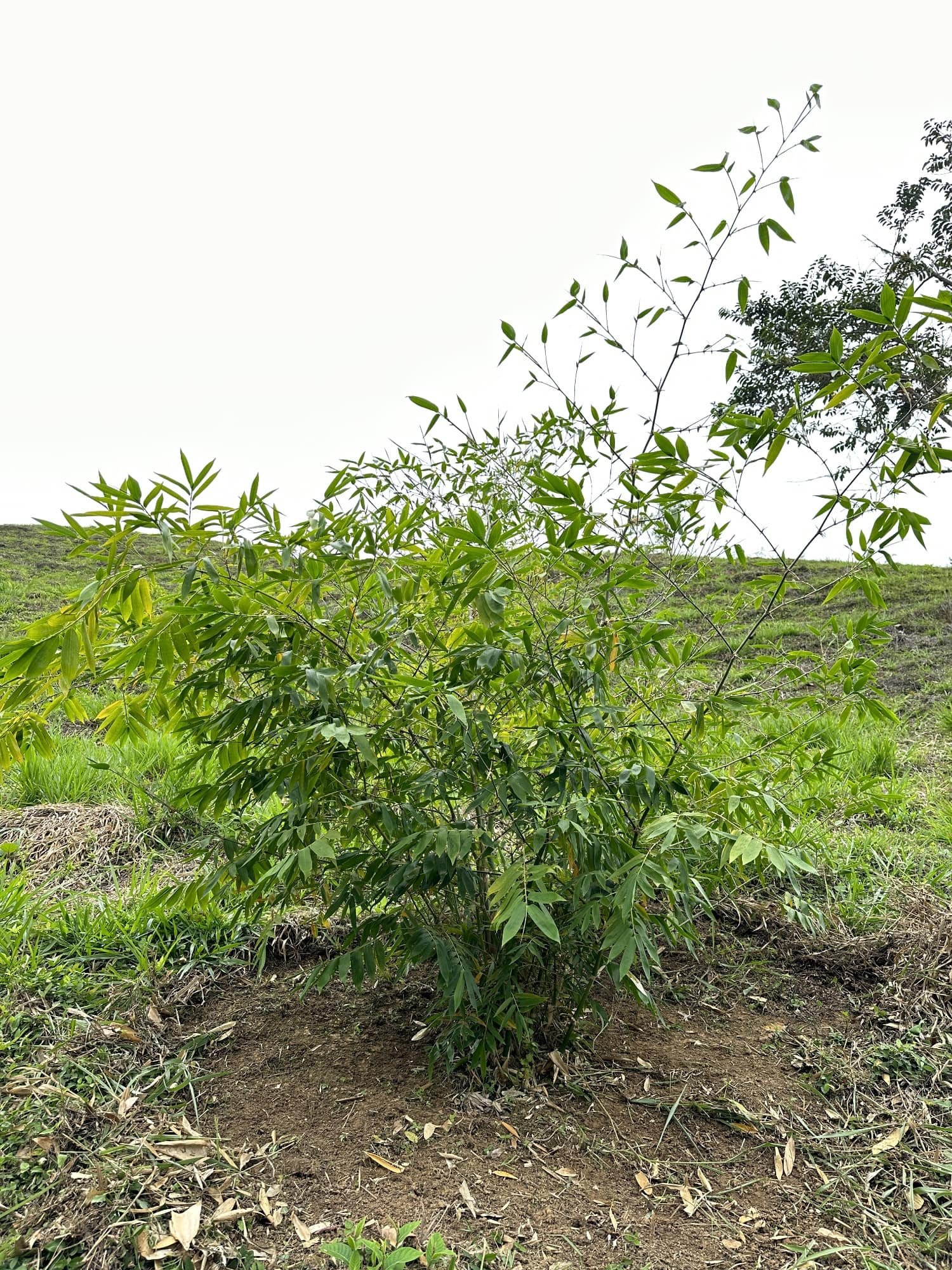













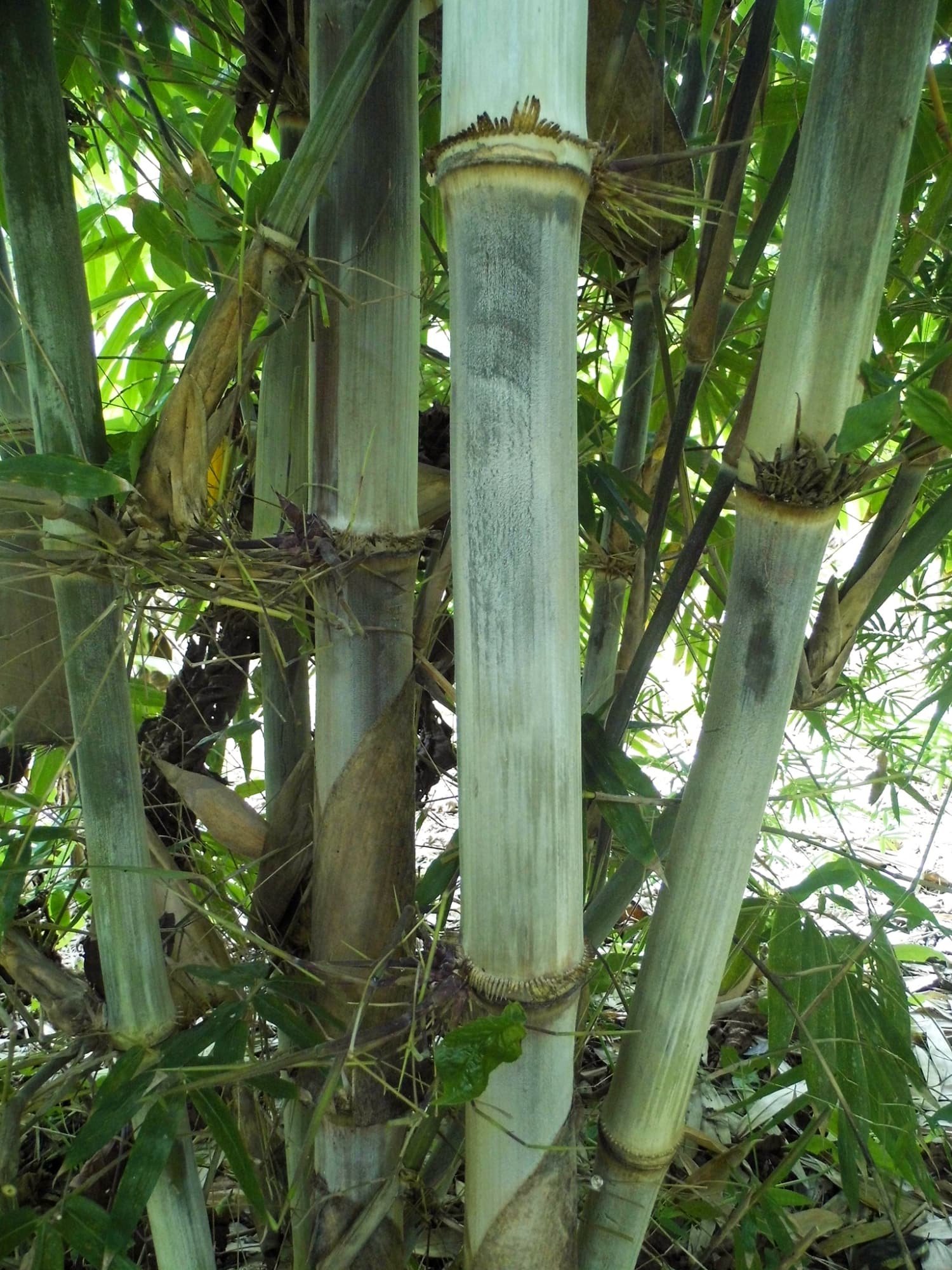


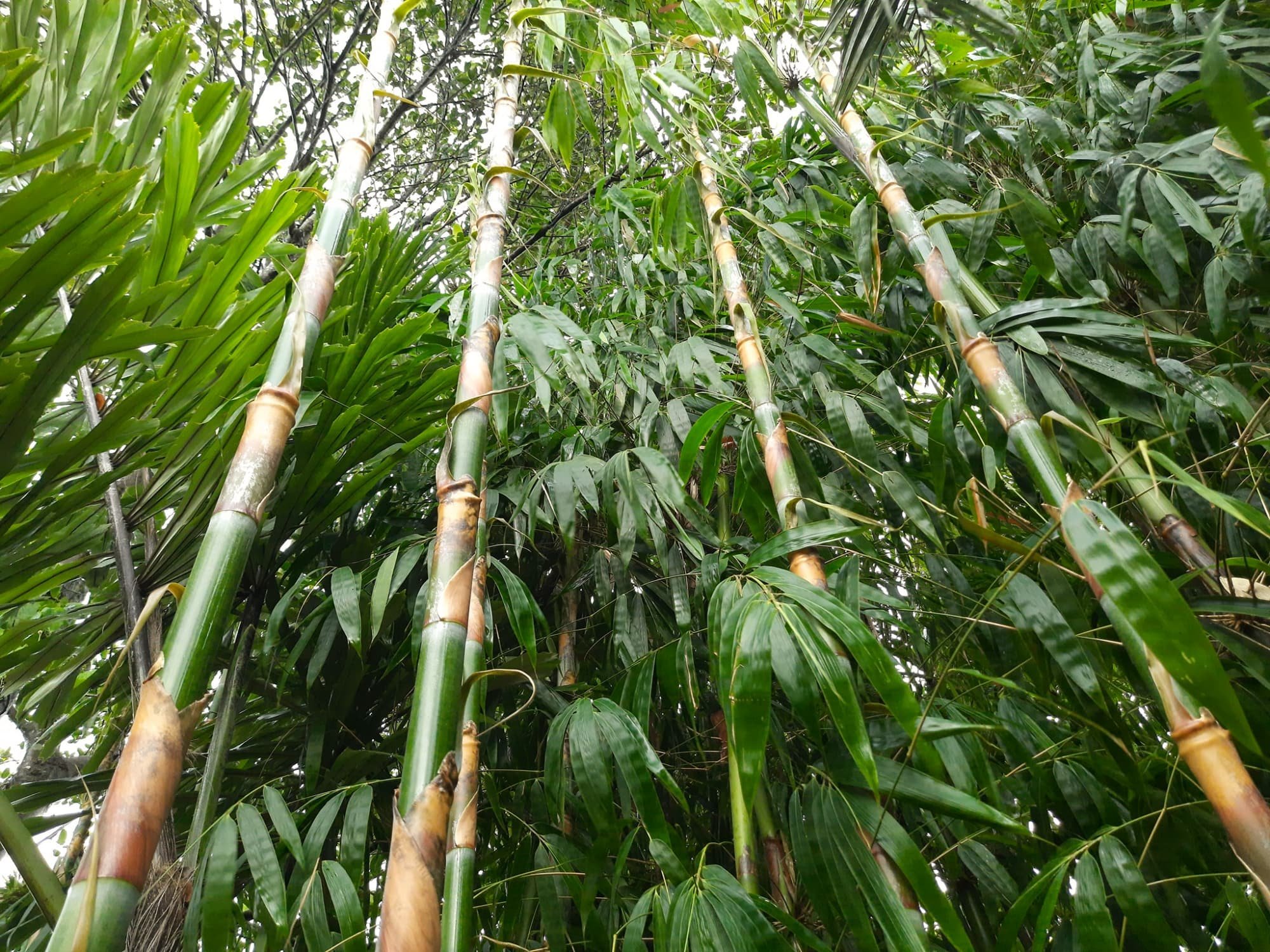
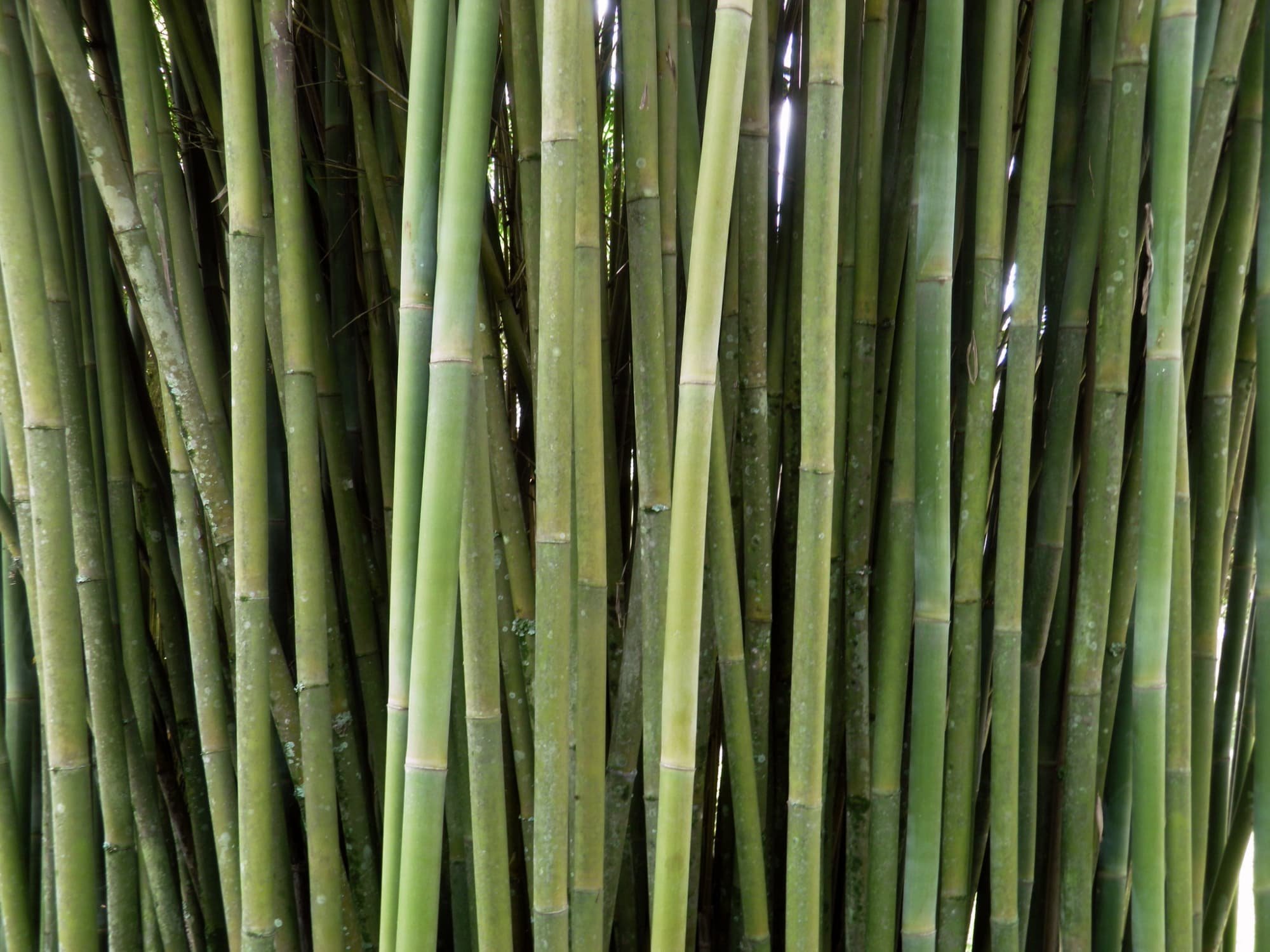
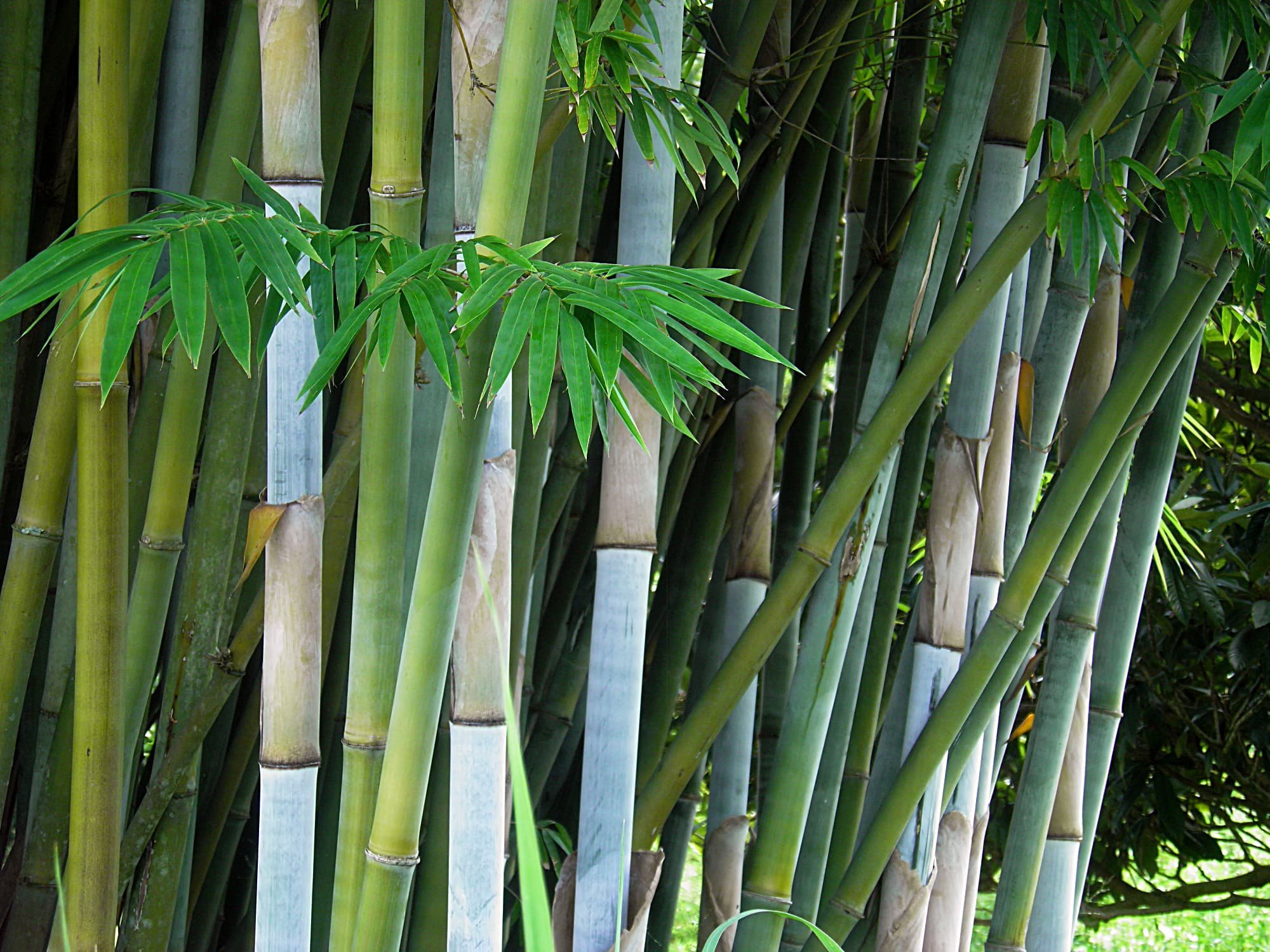
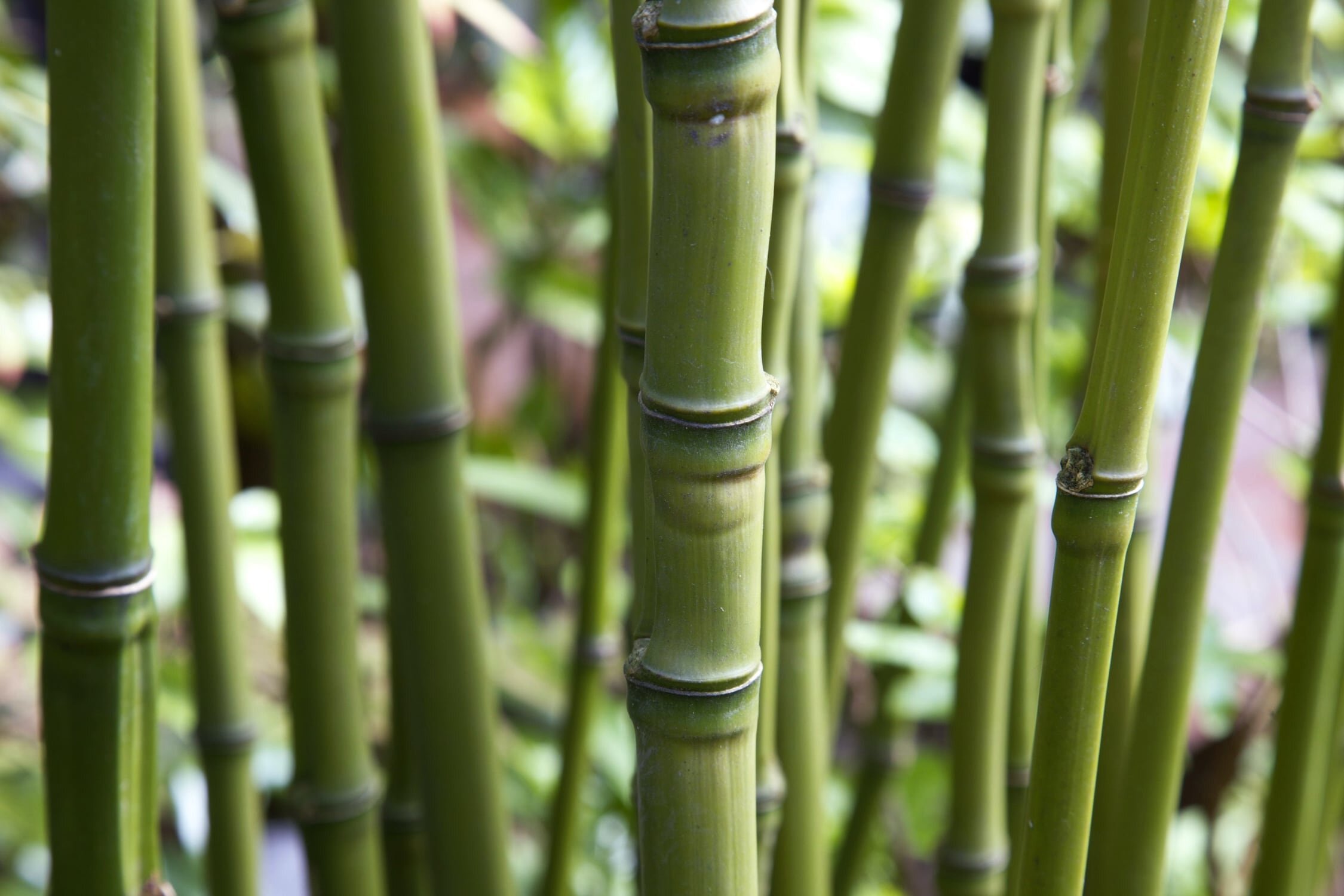
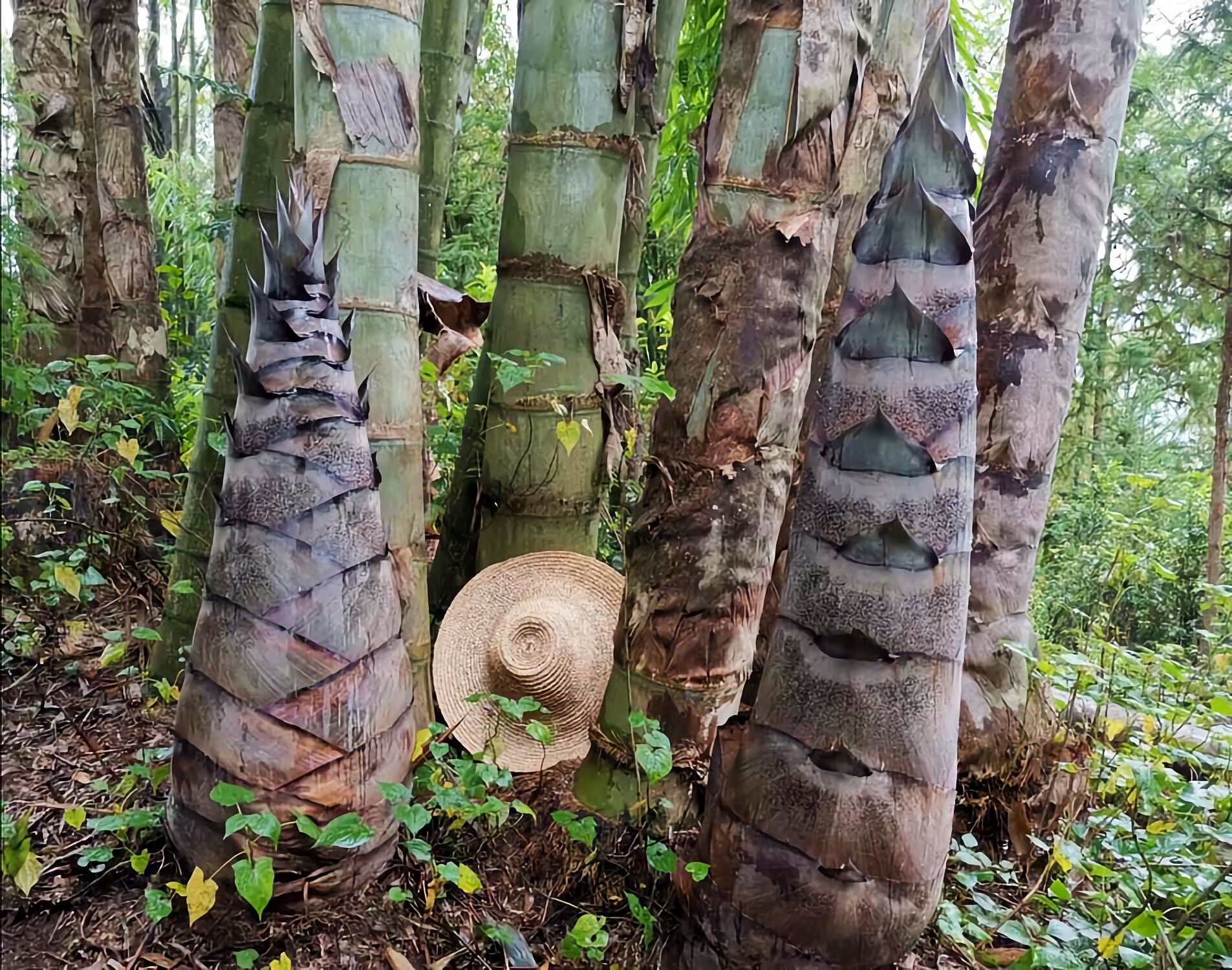
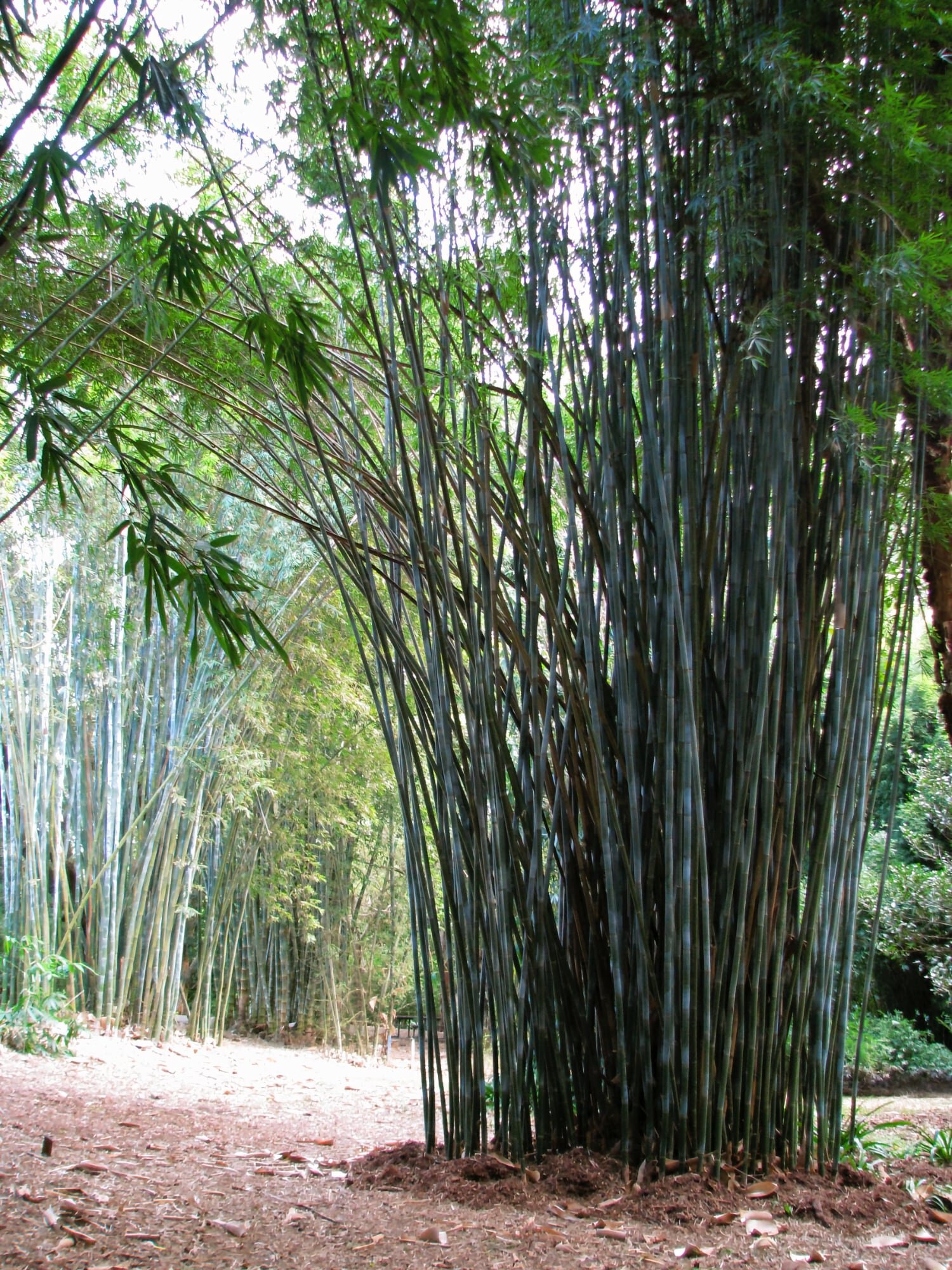
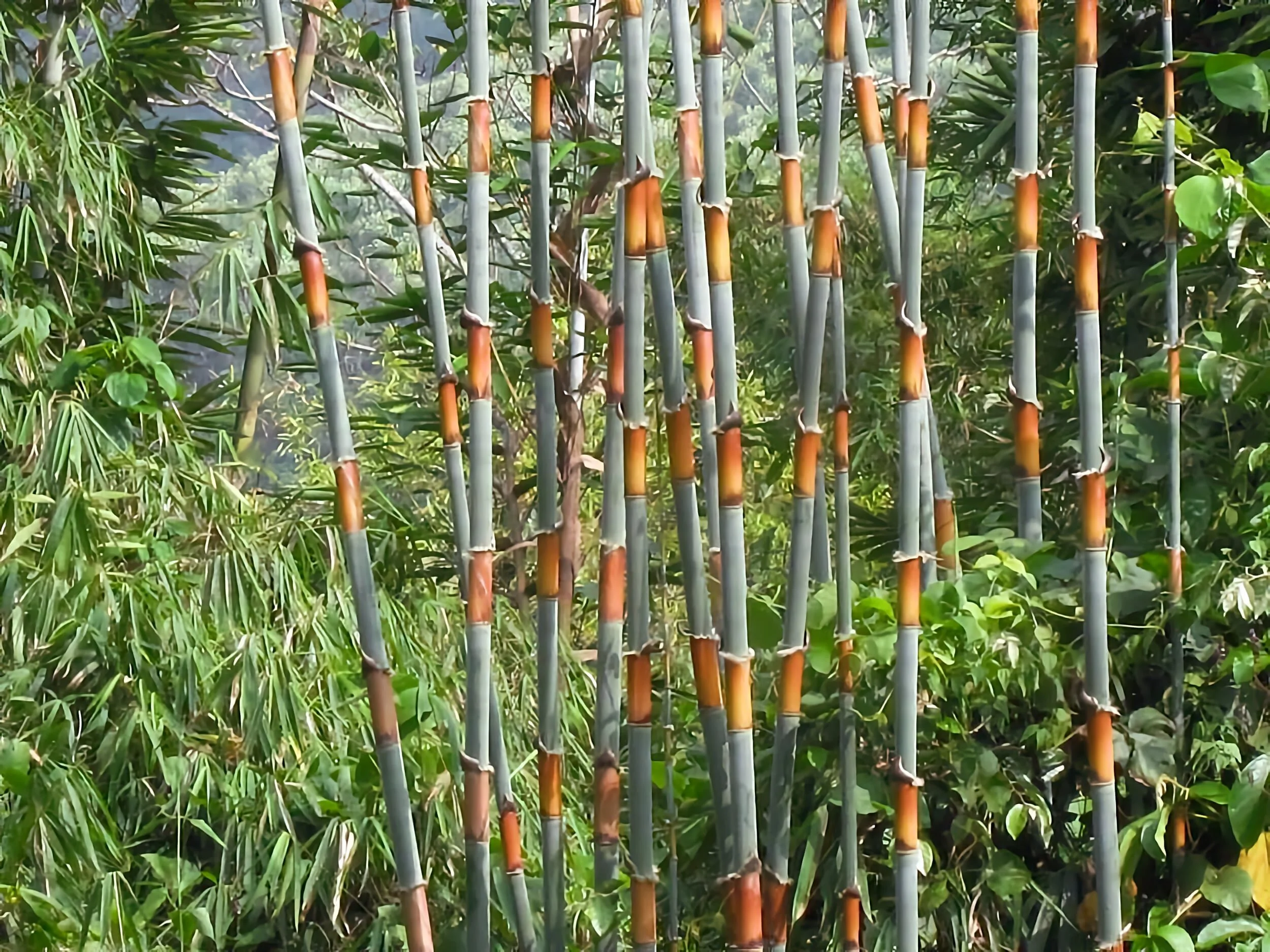
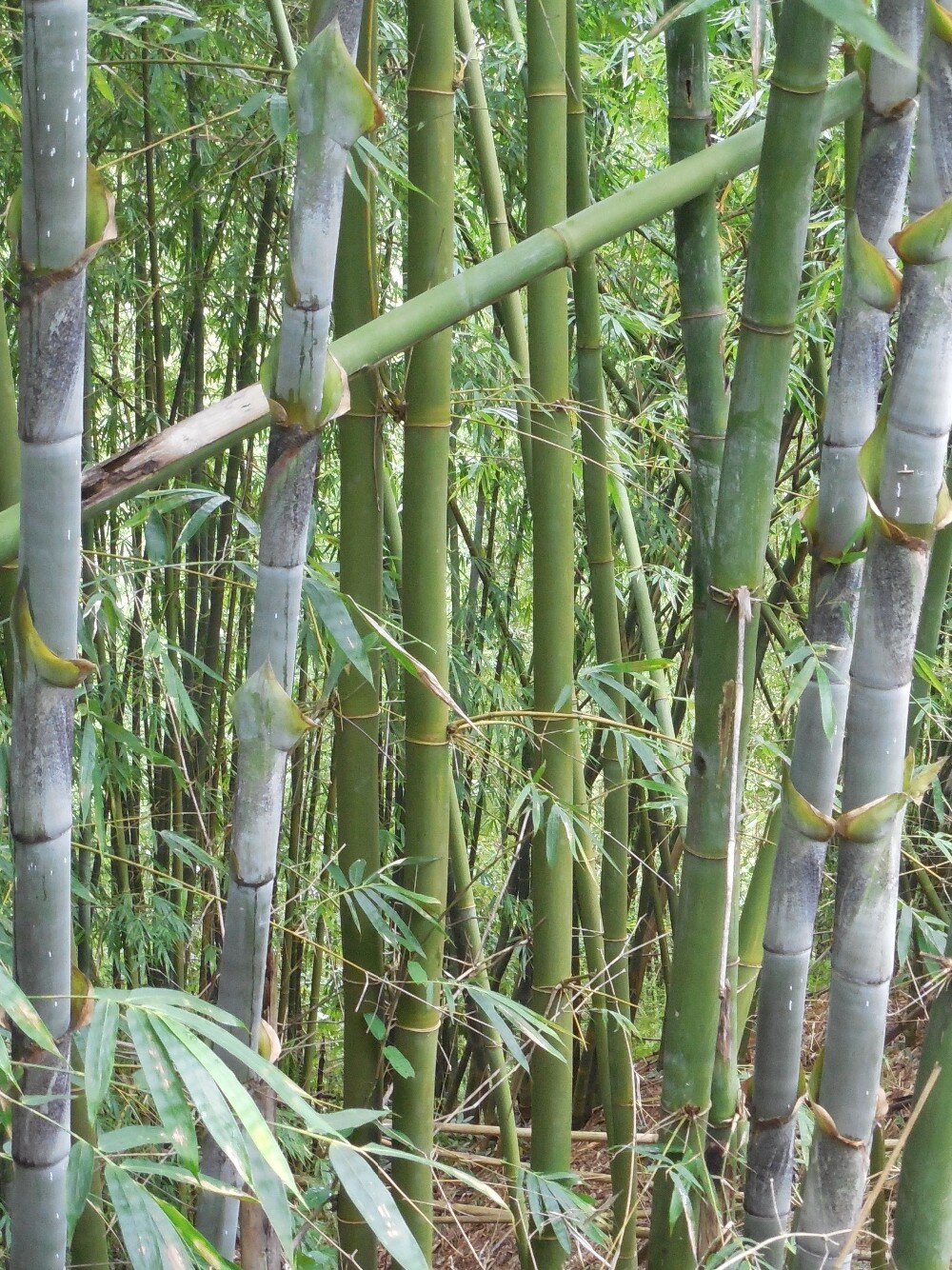
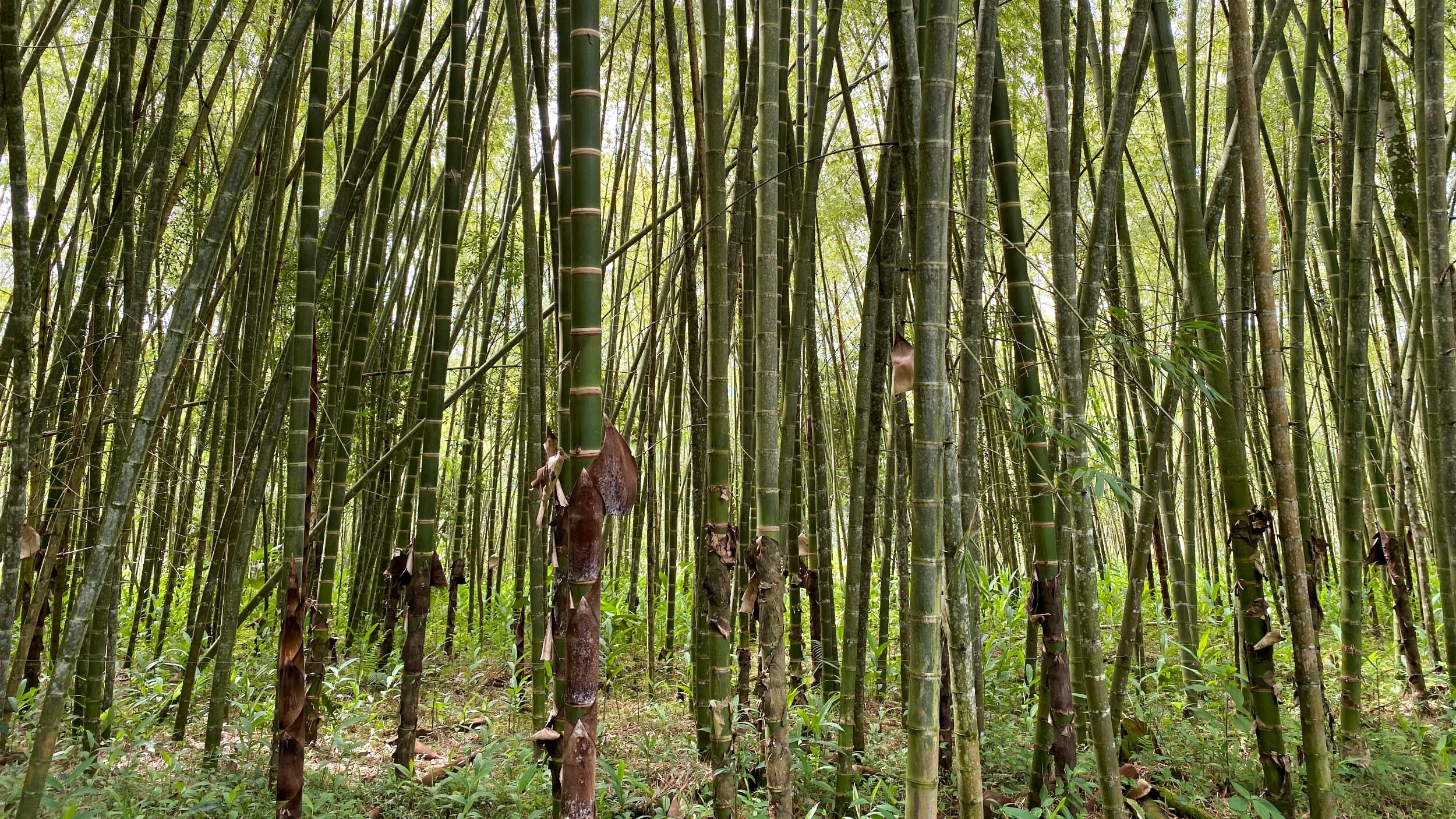
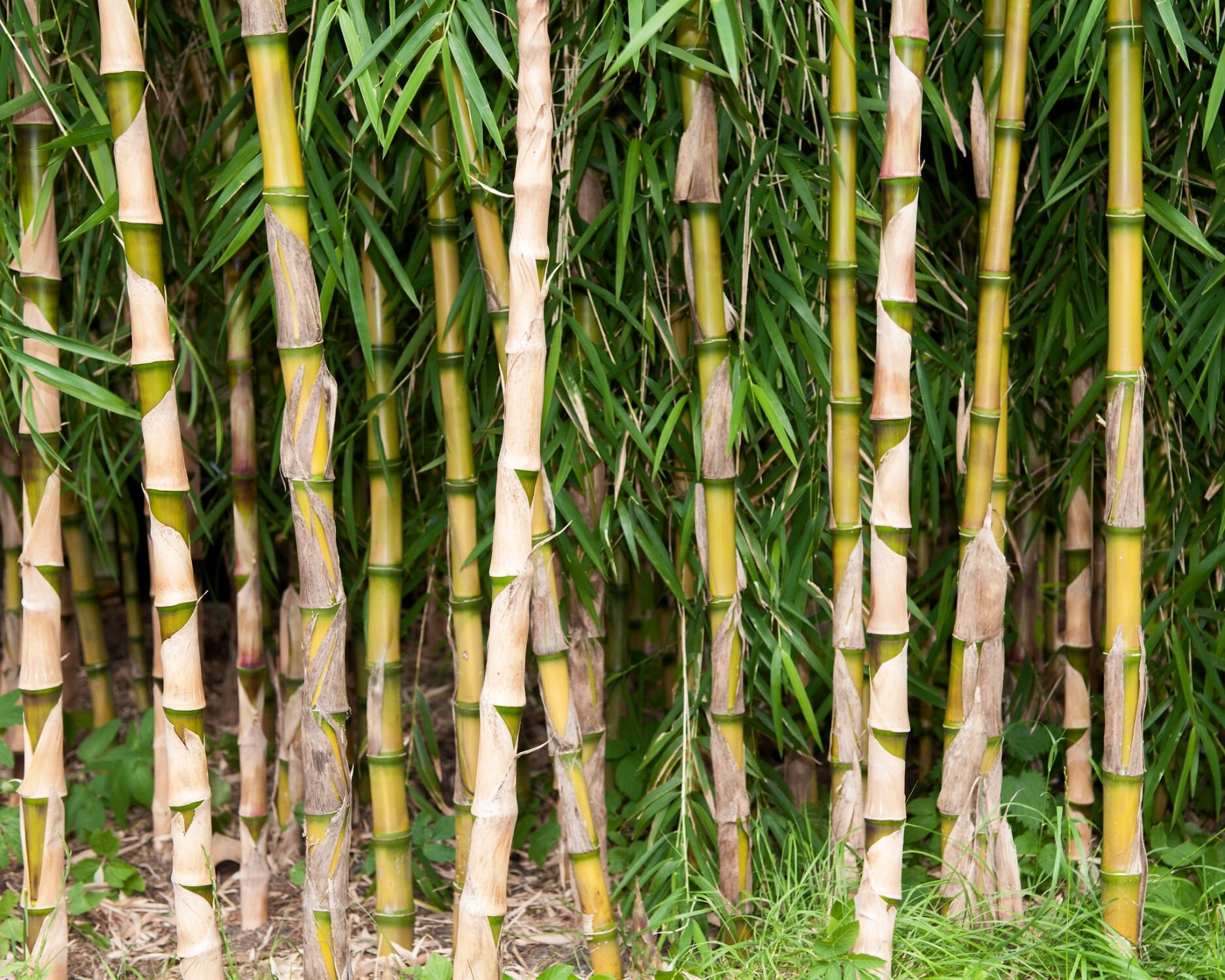
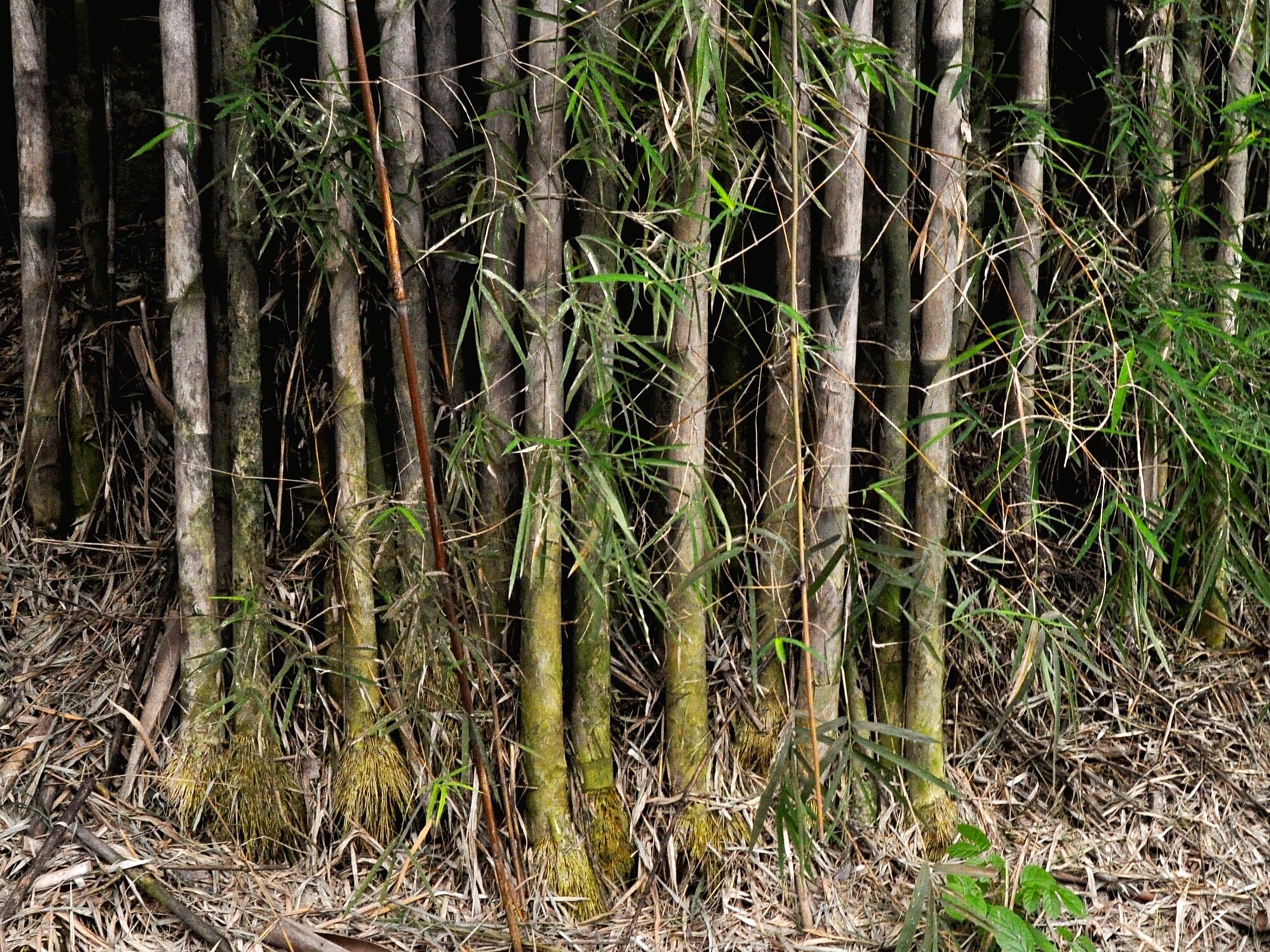
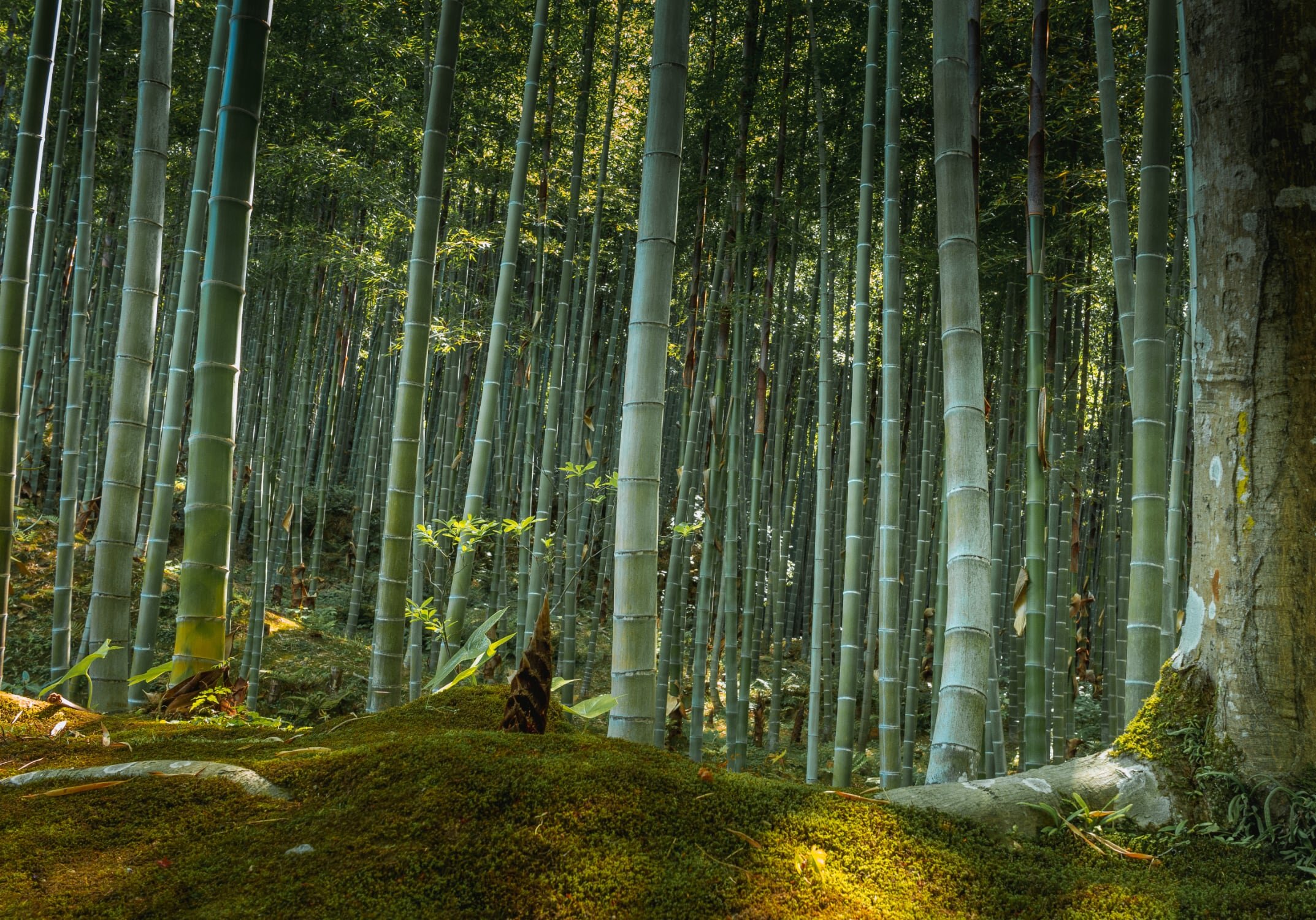
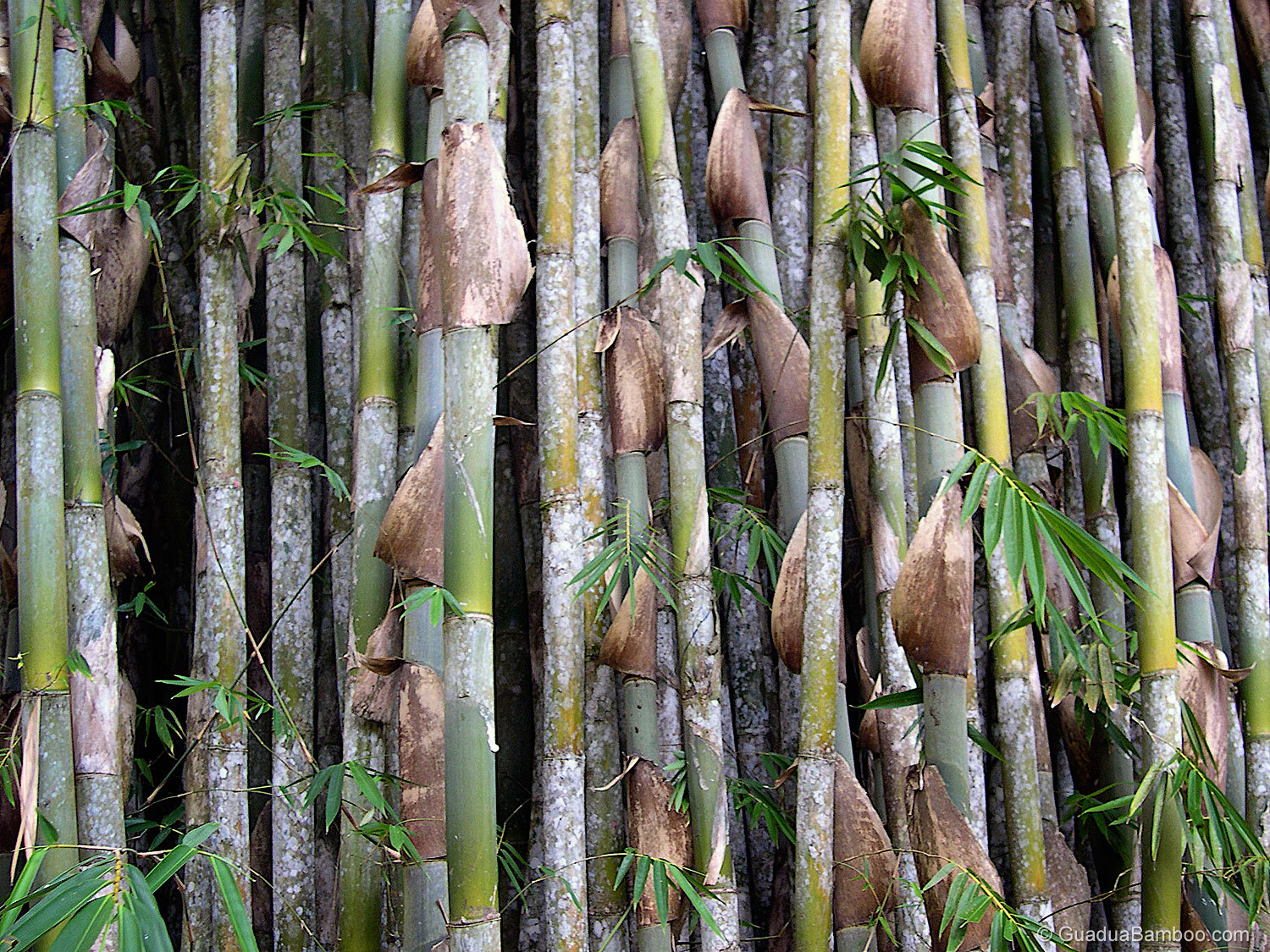









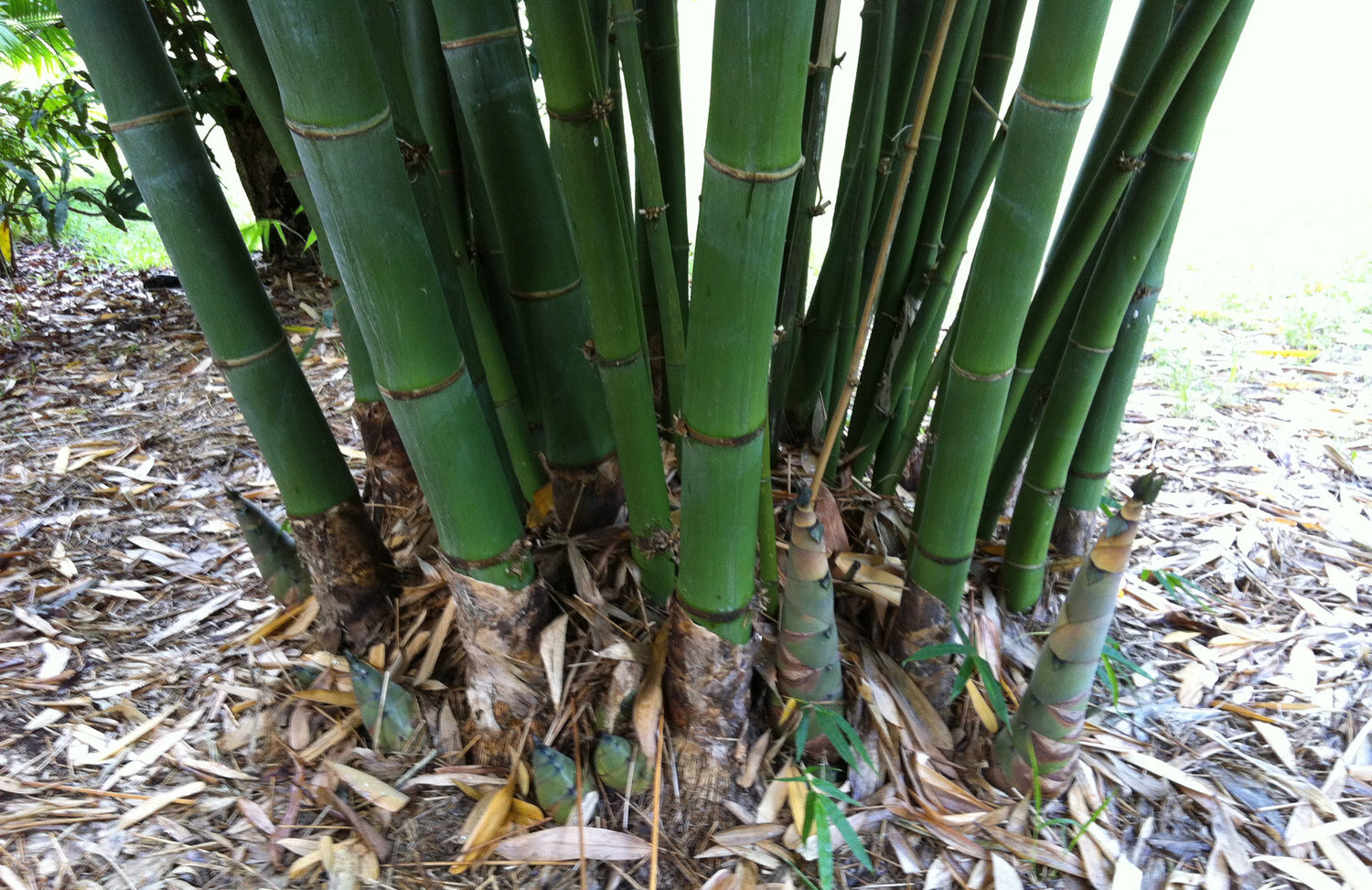




Date planted: 17 September 2021
Growth update: 6 March 2025